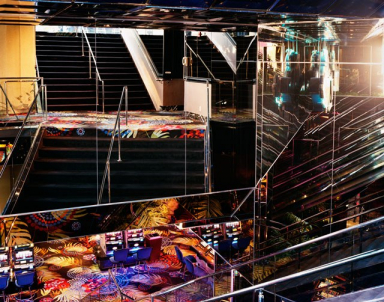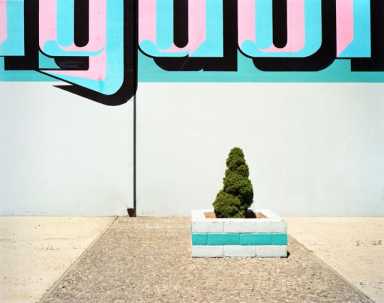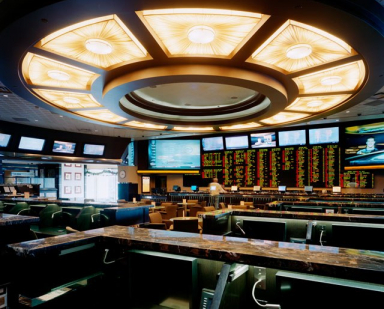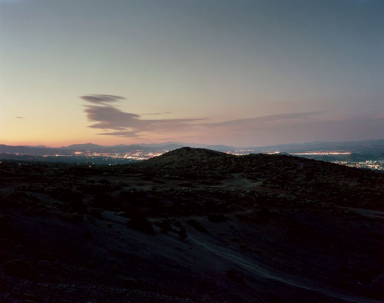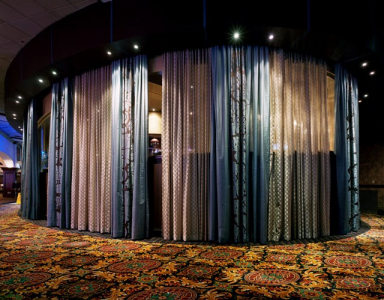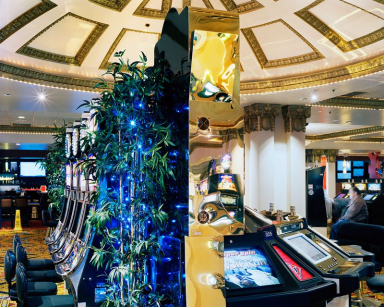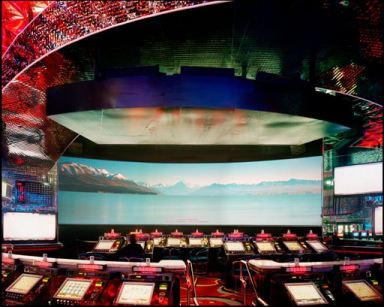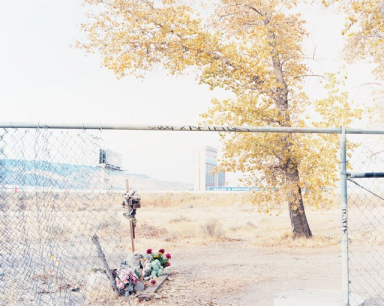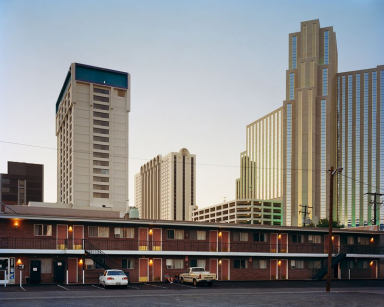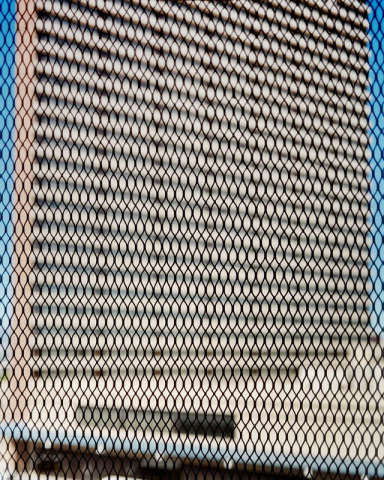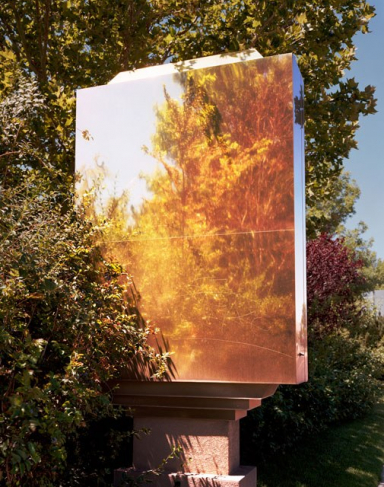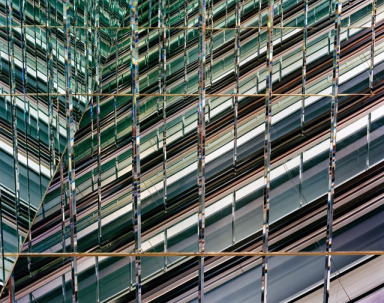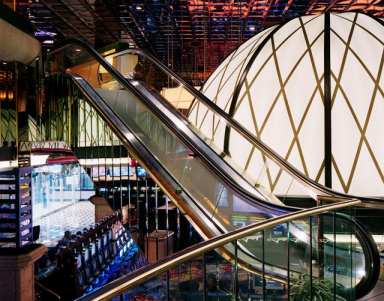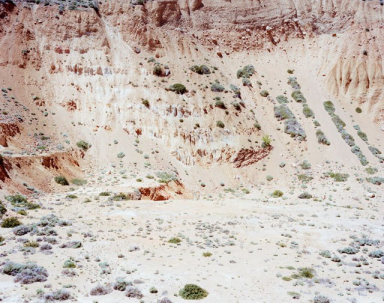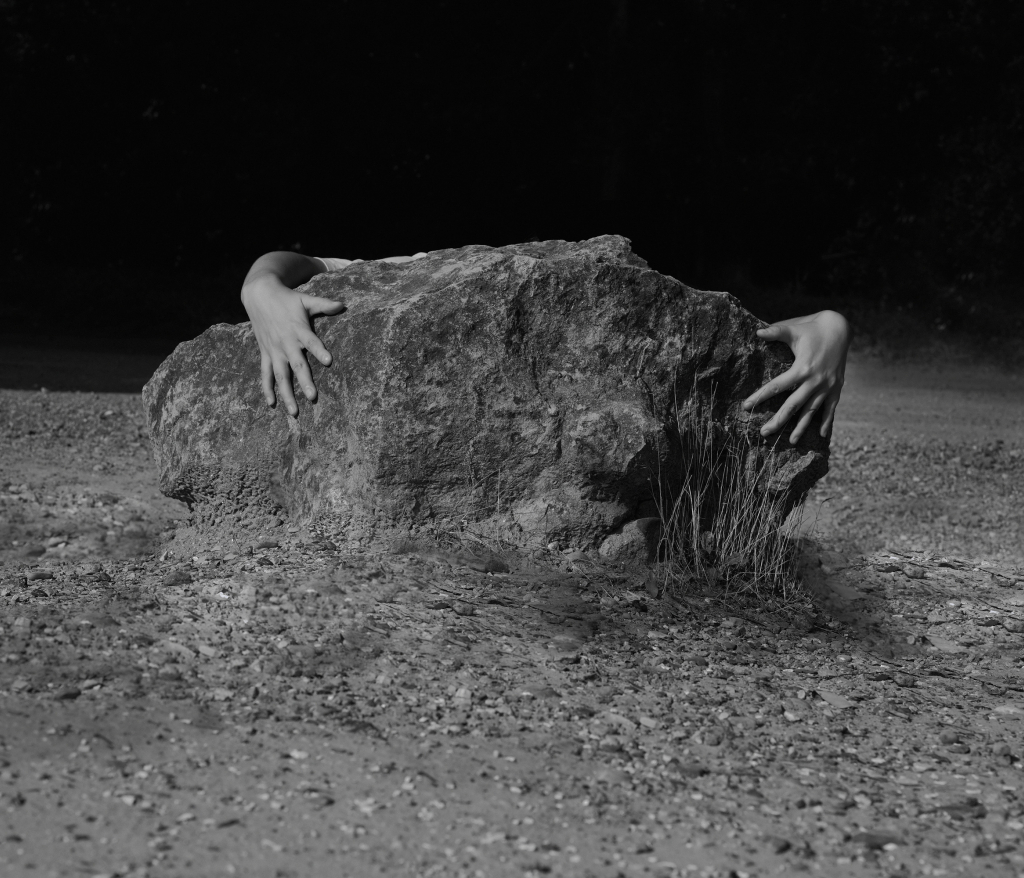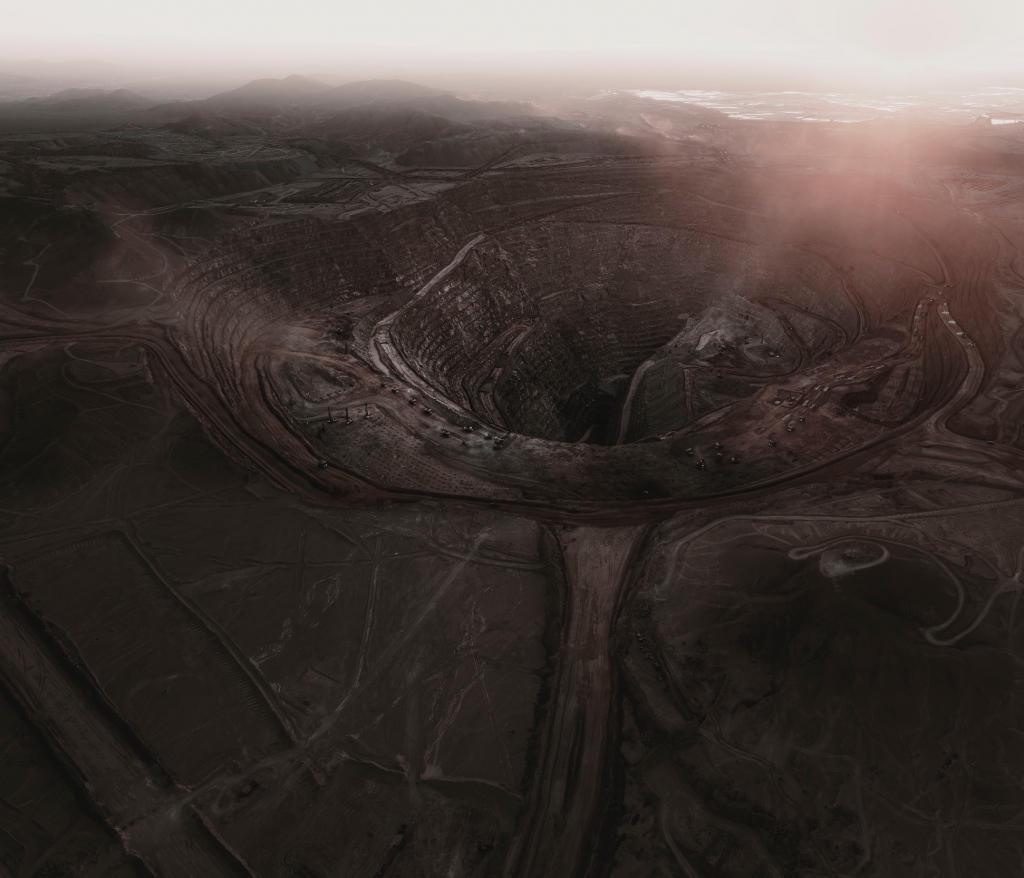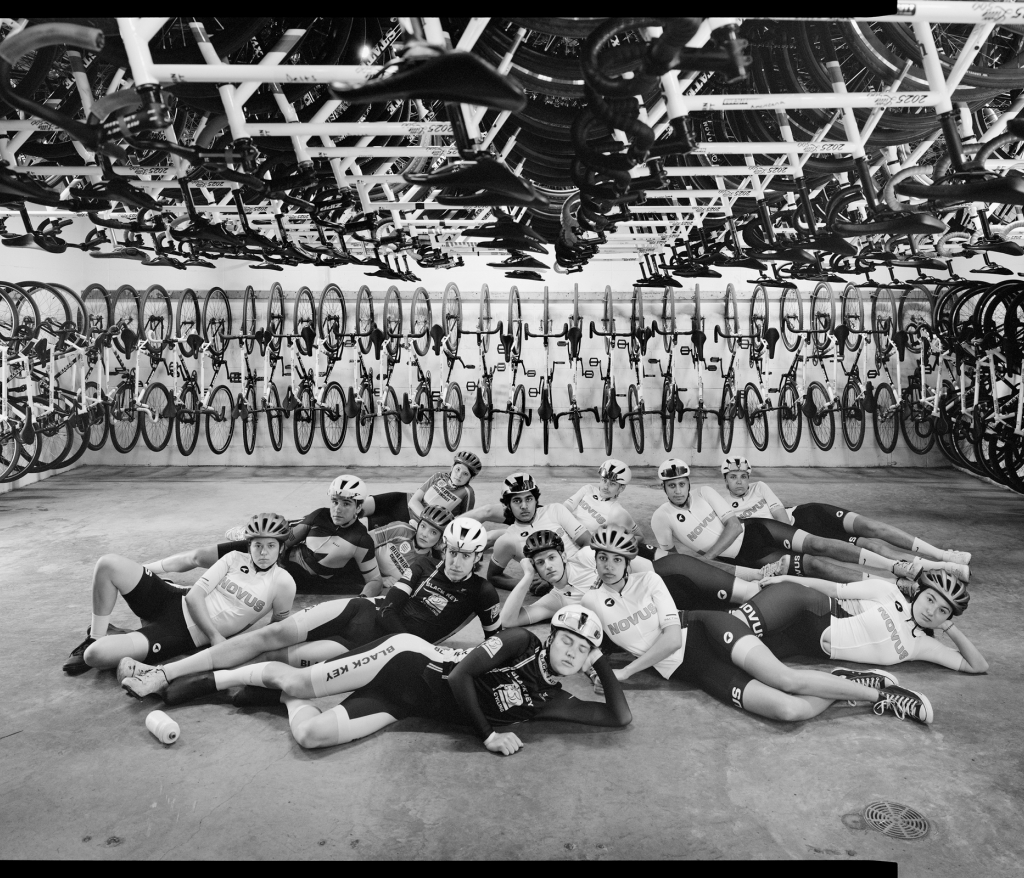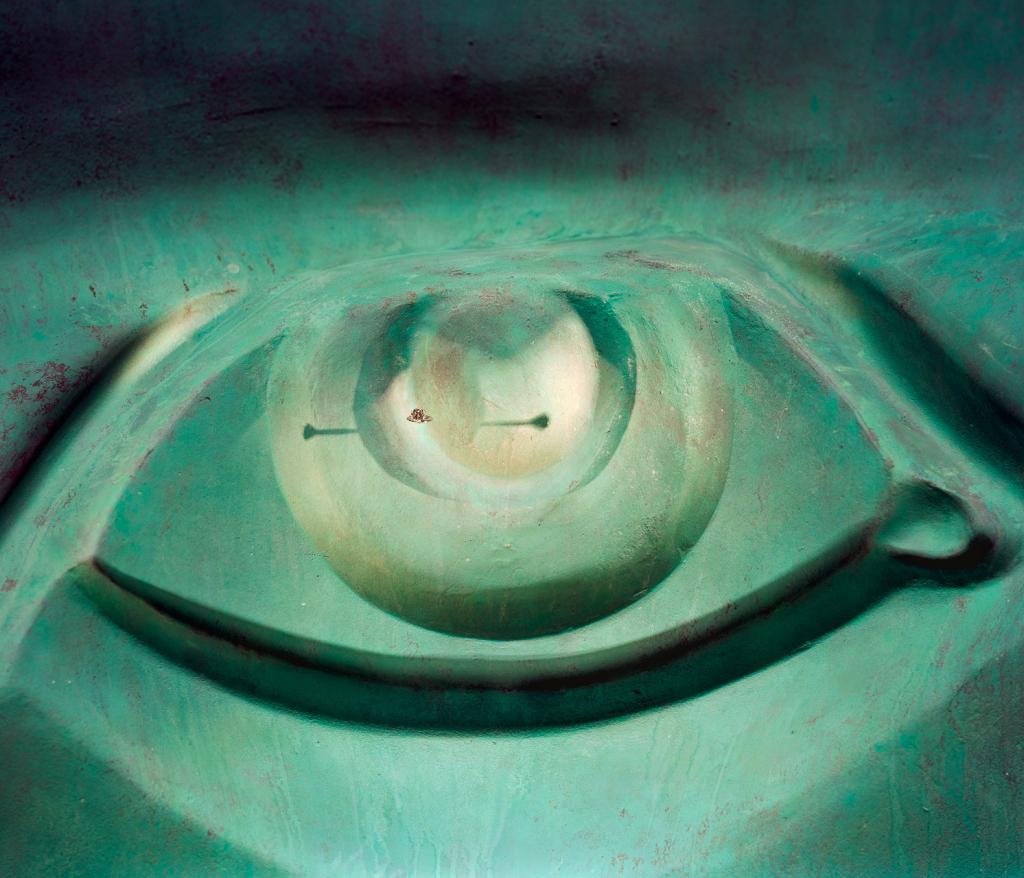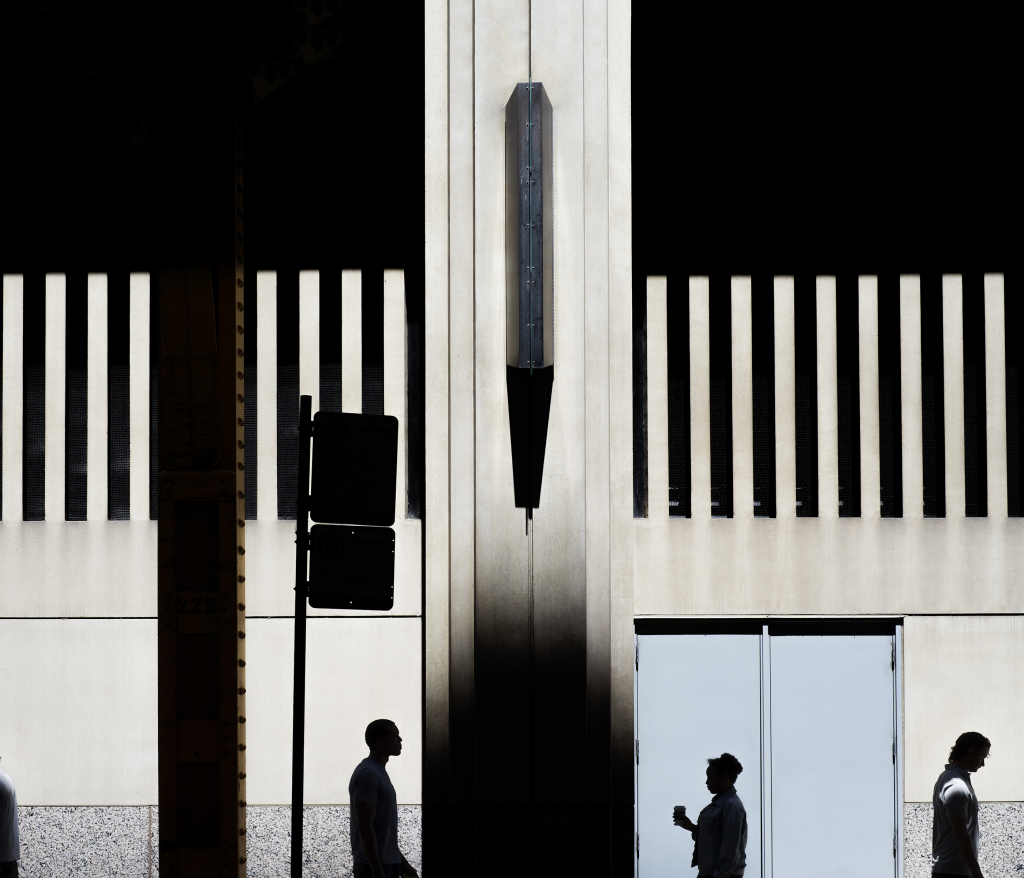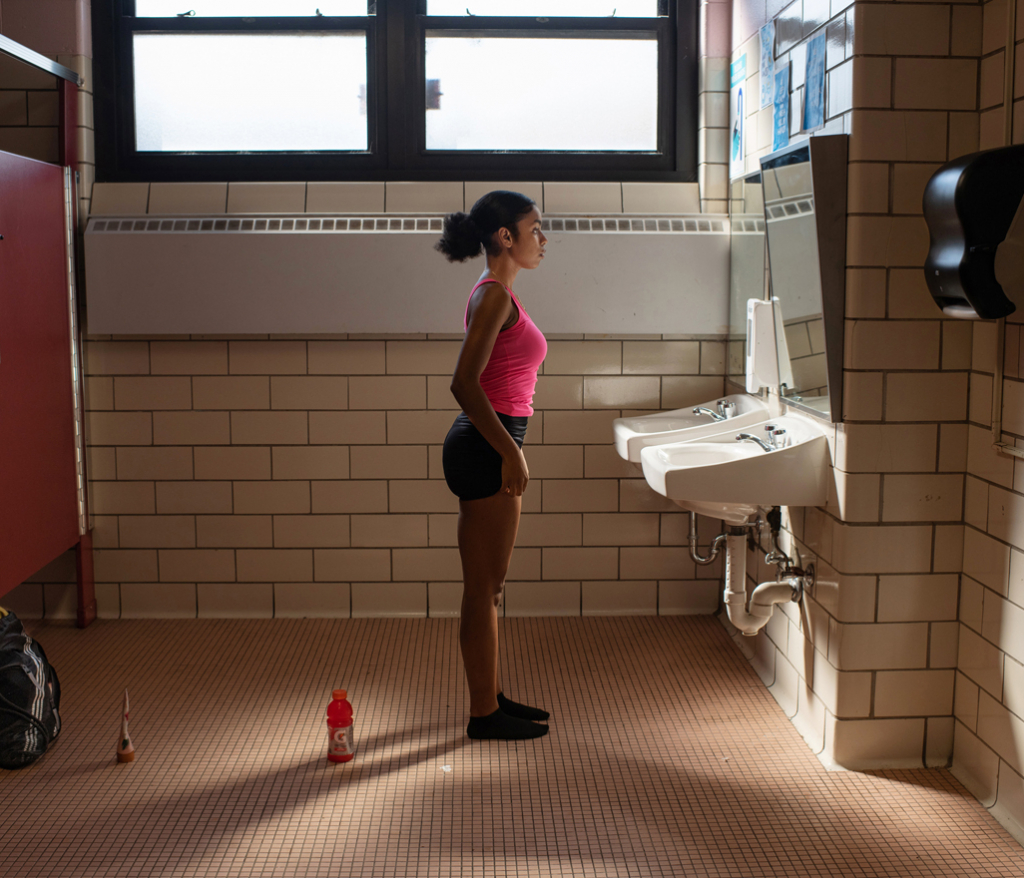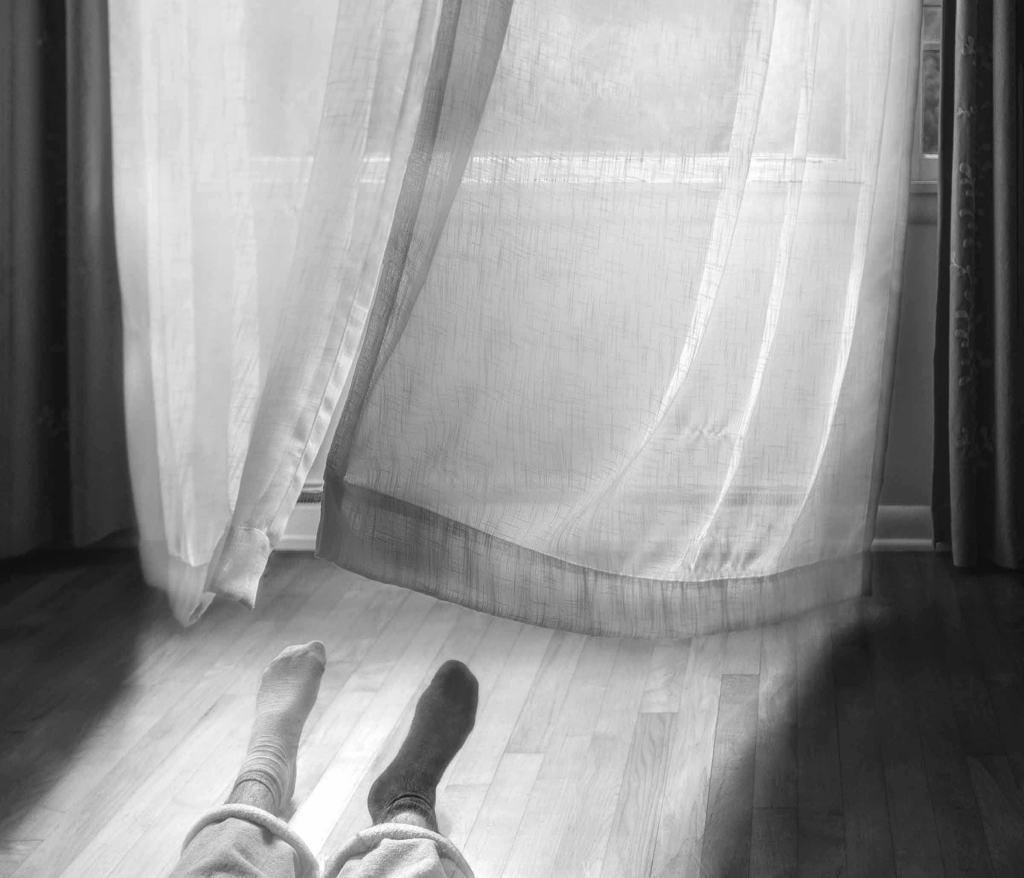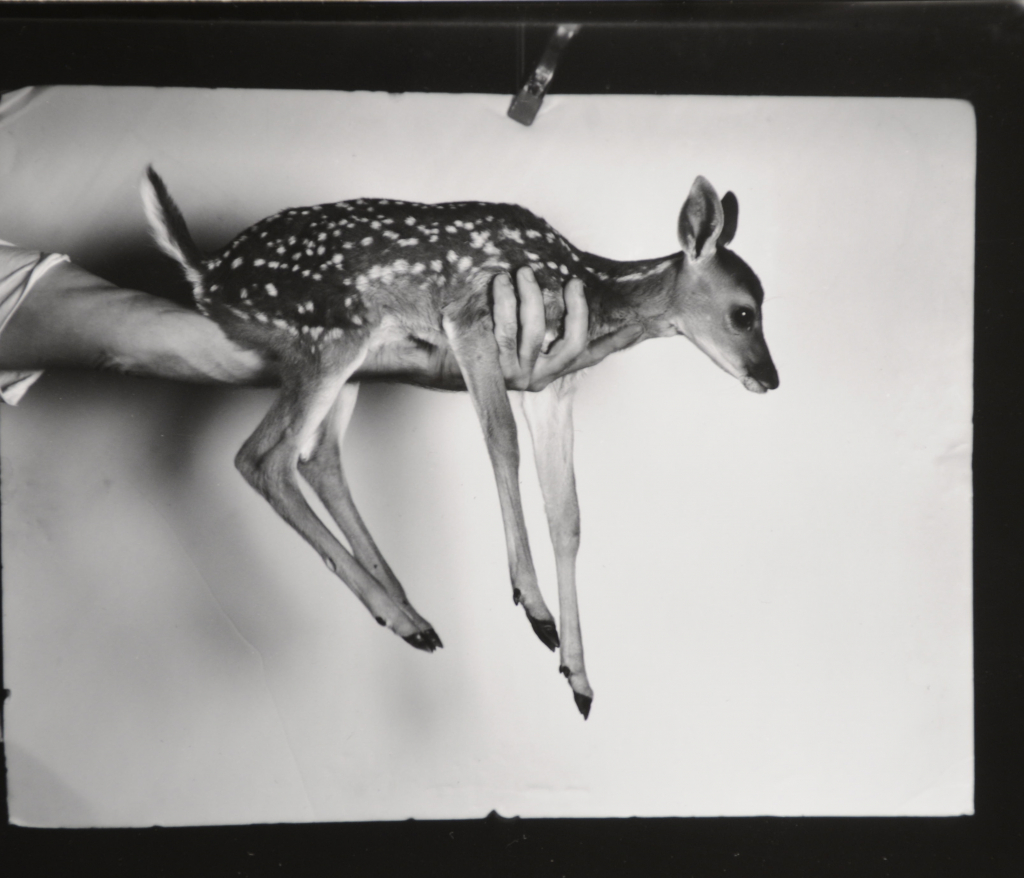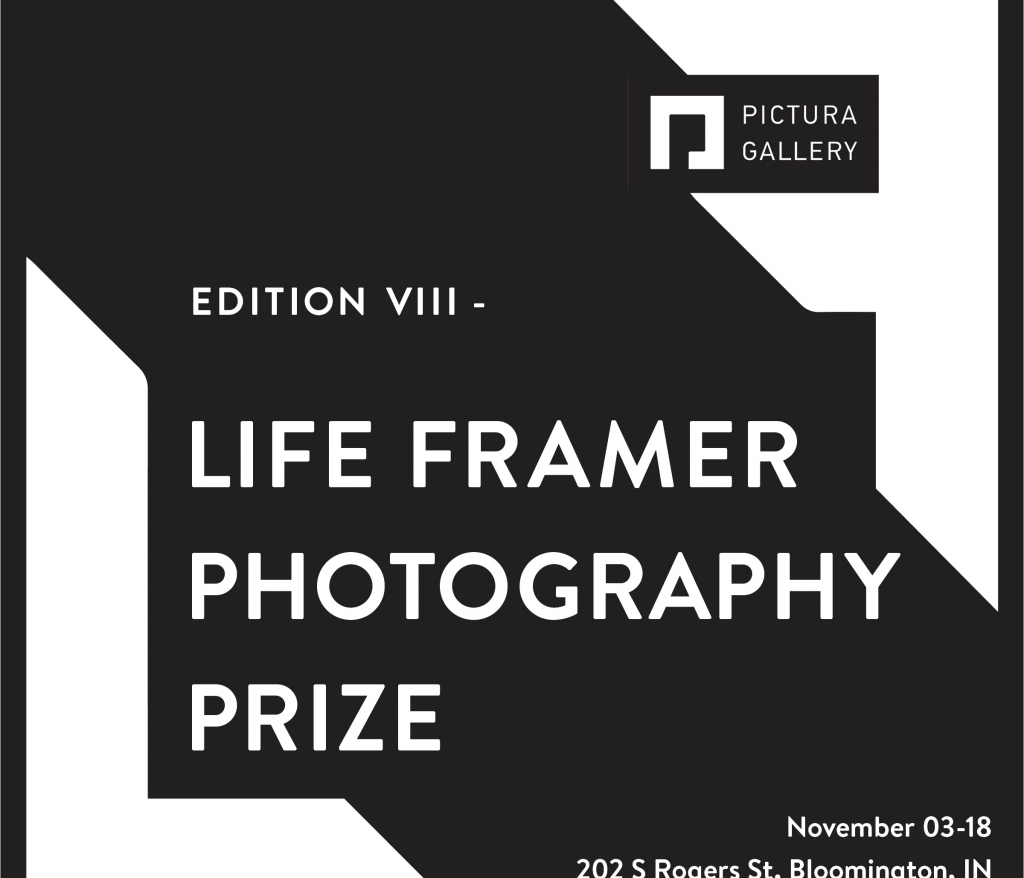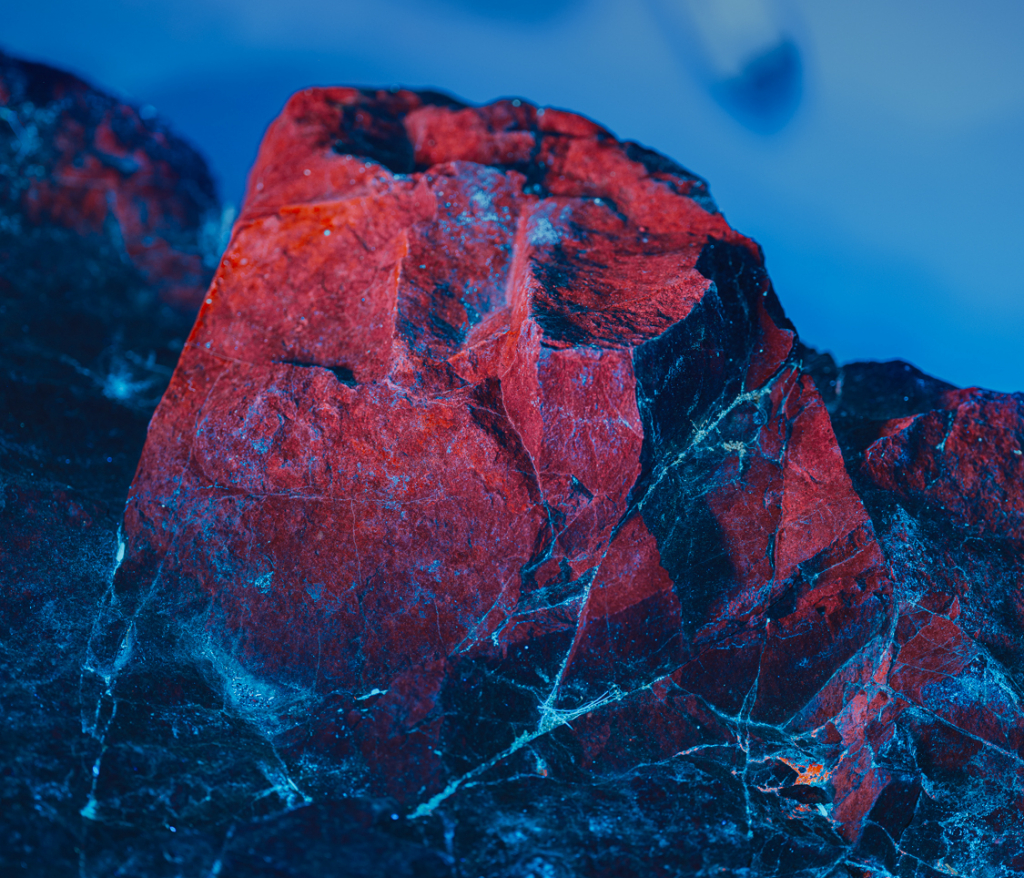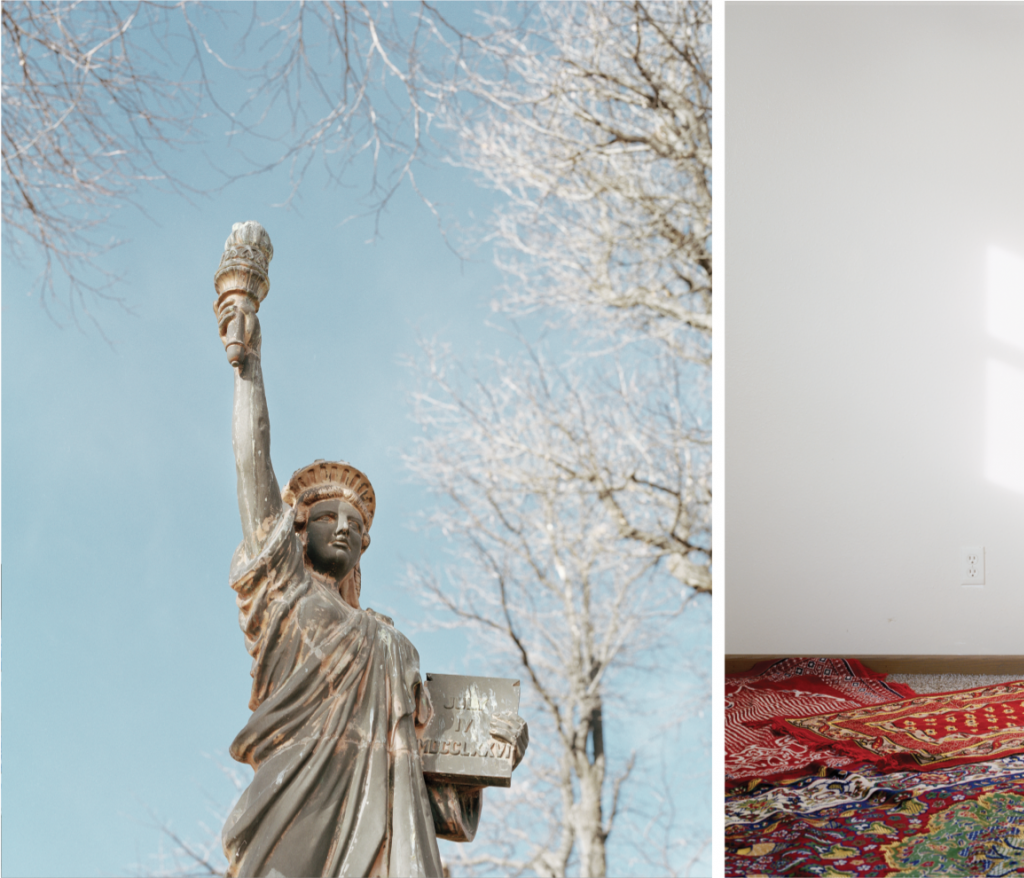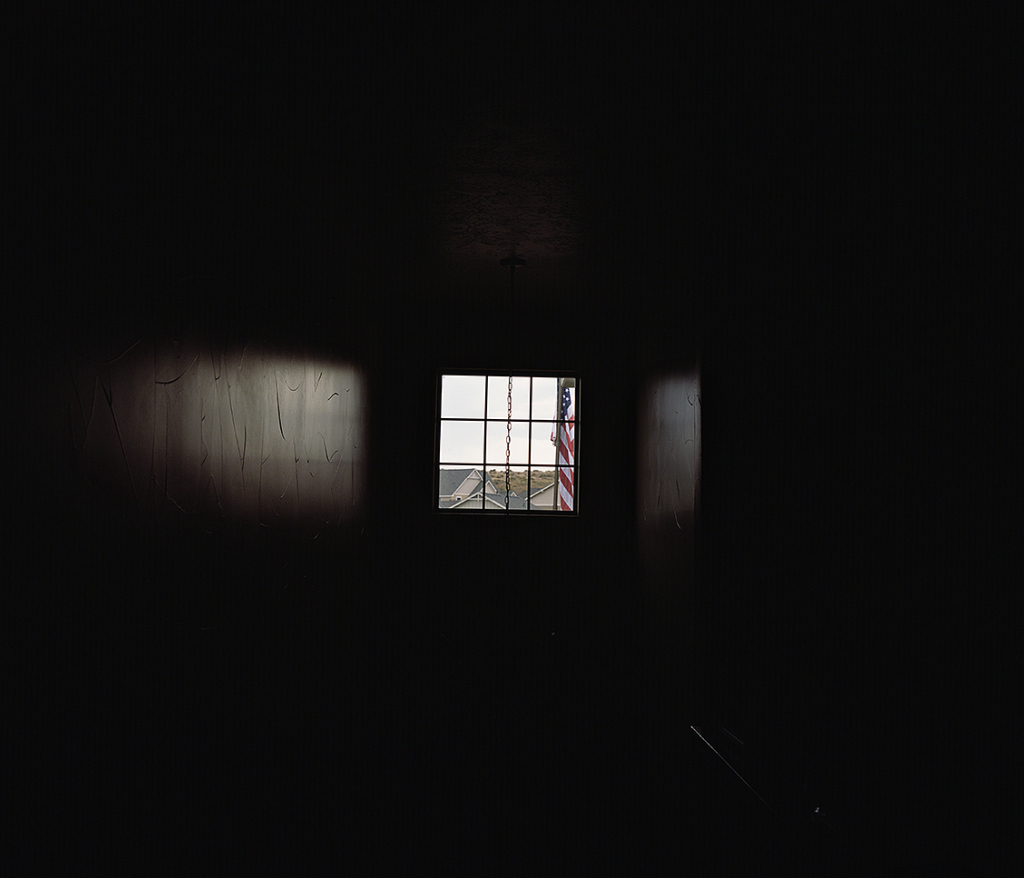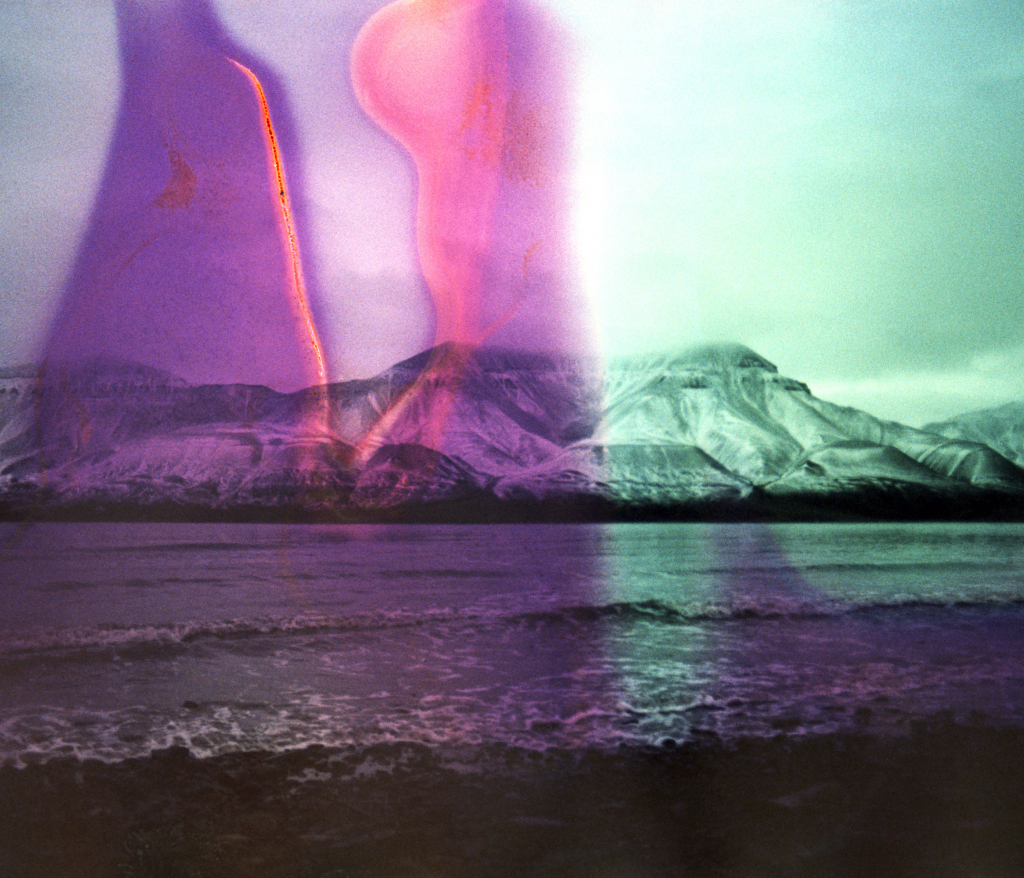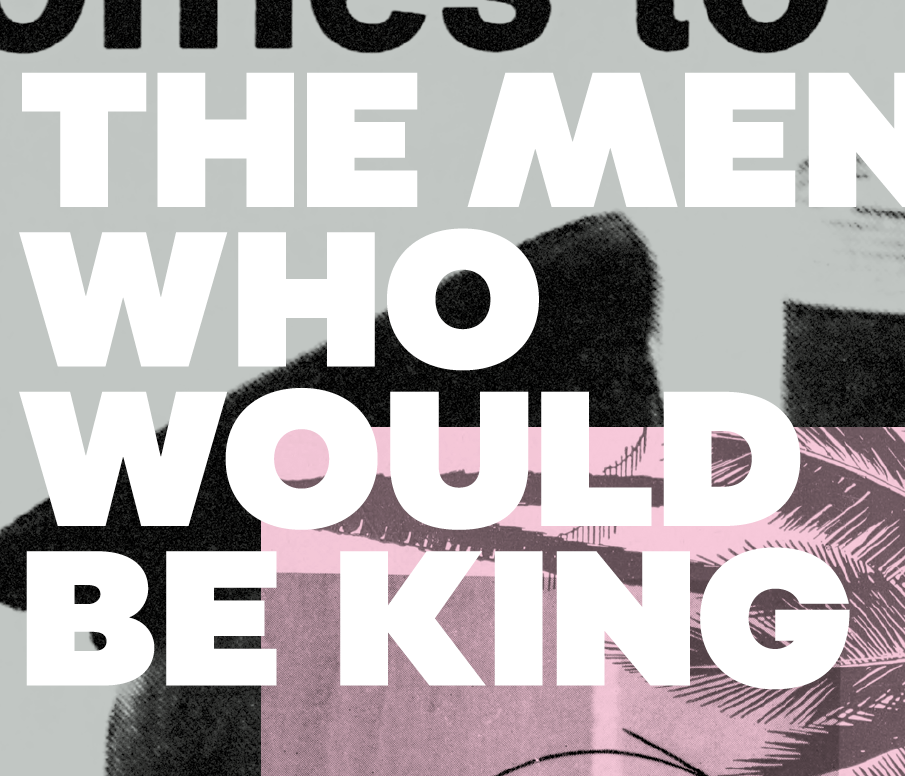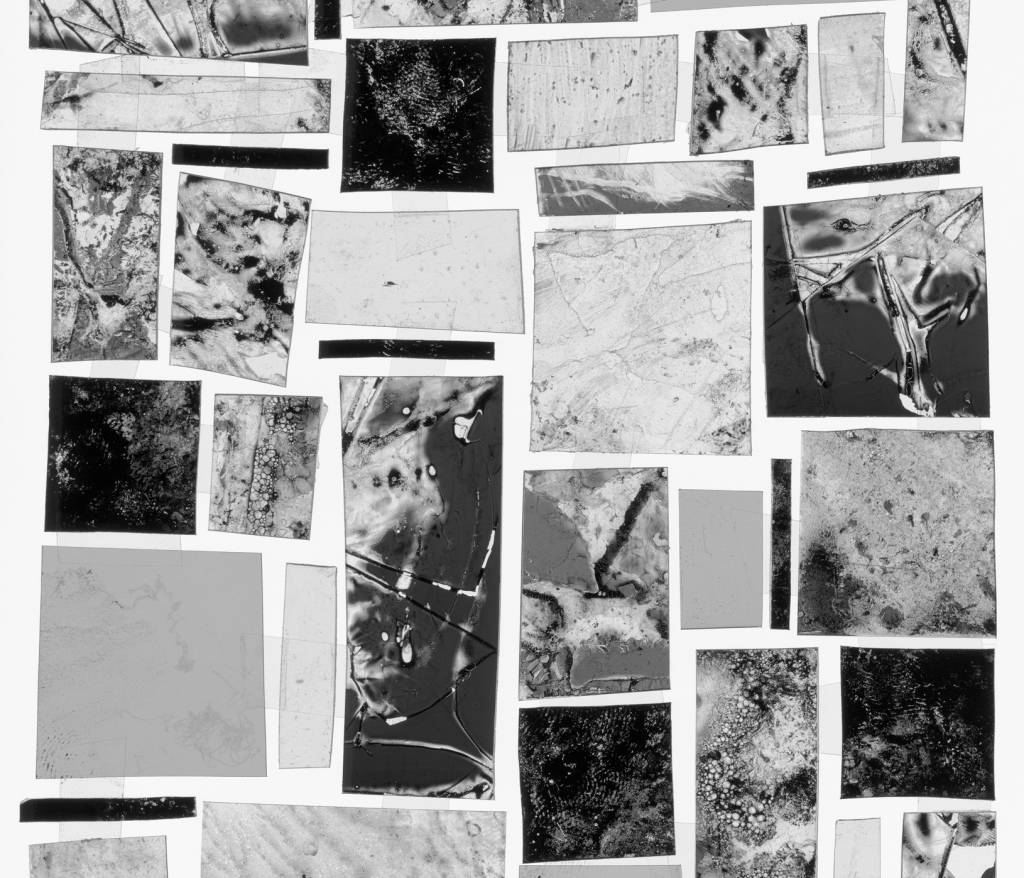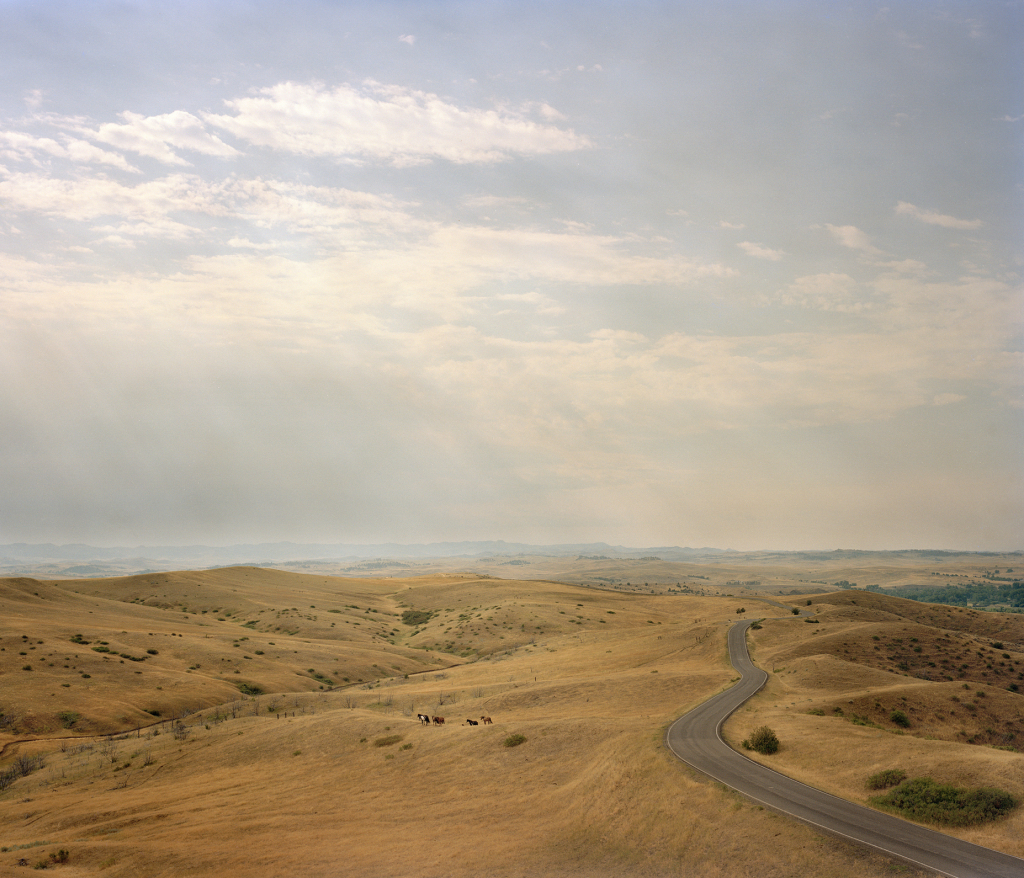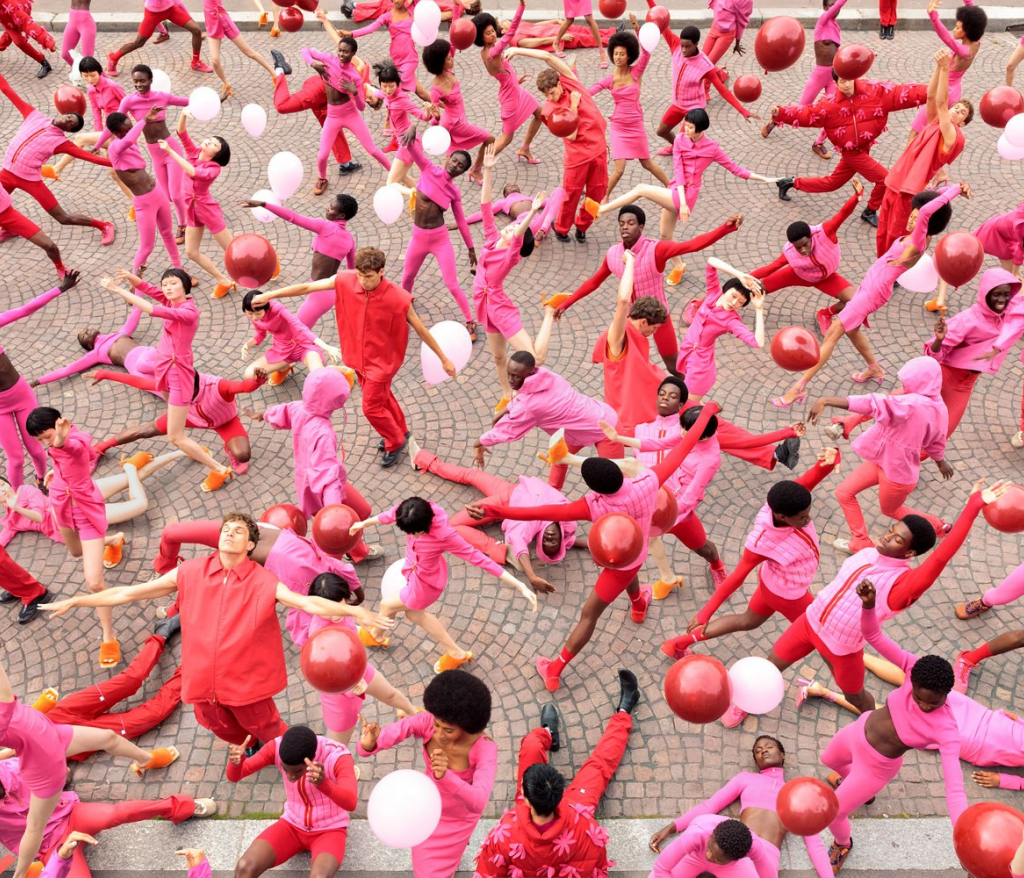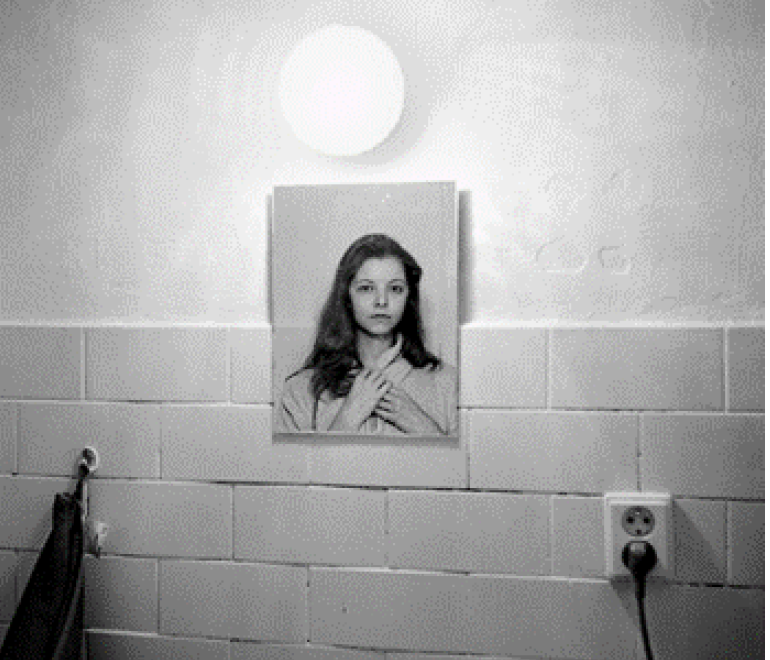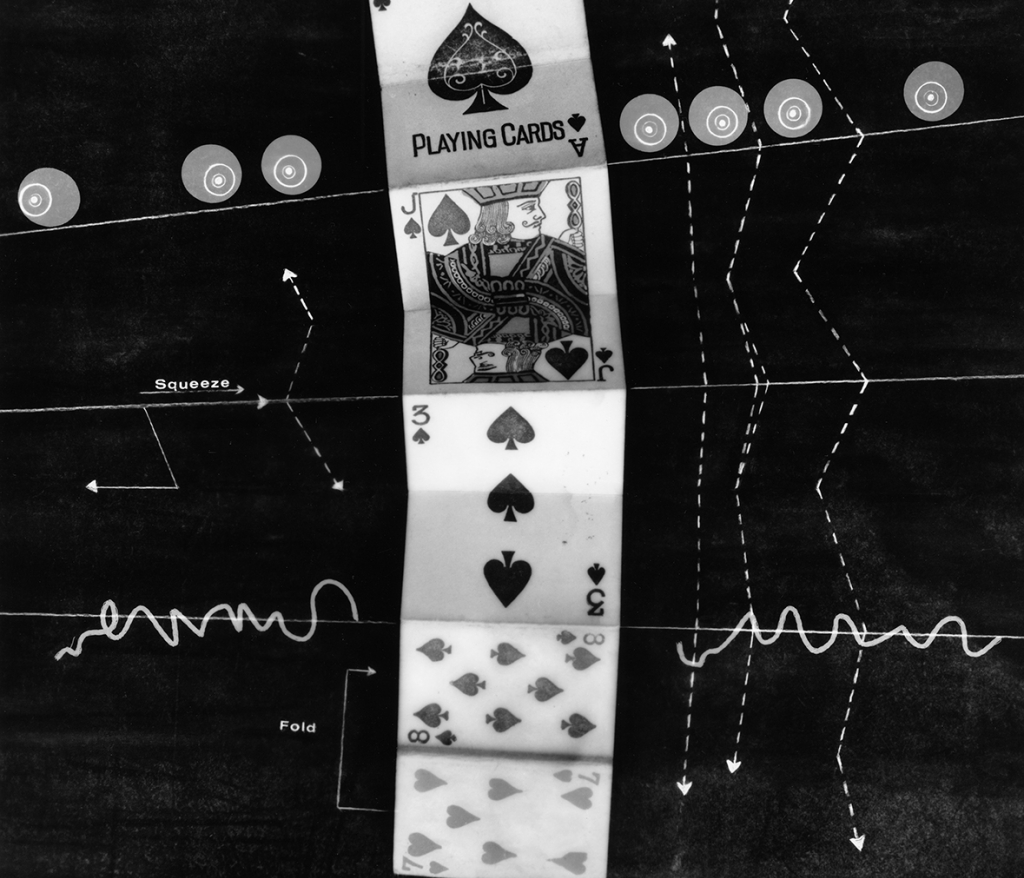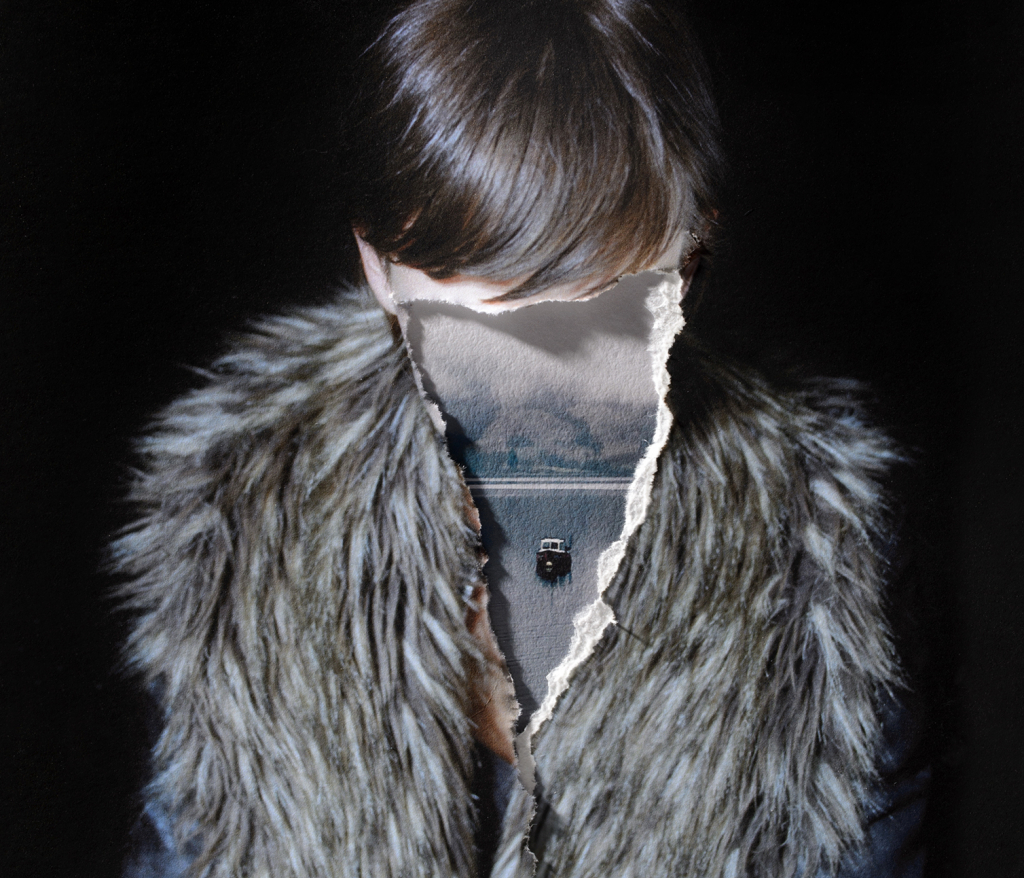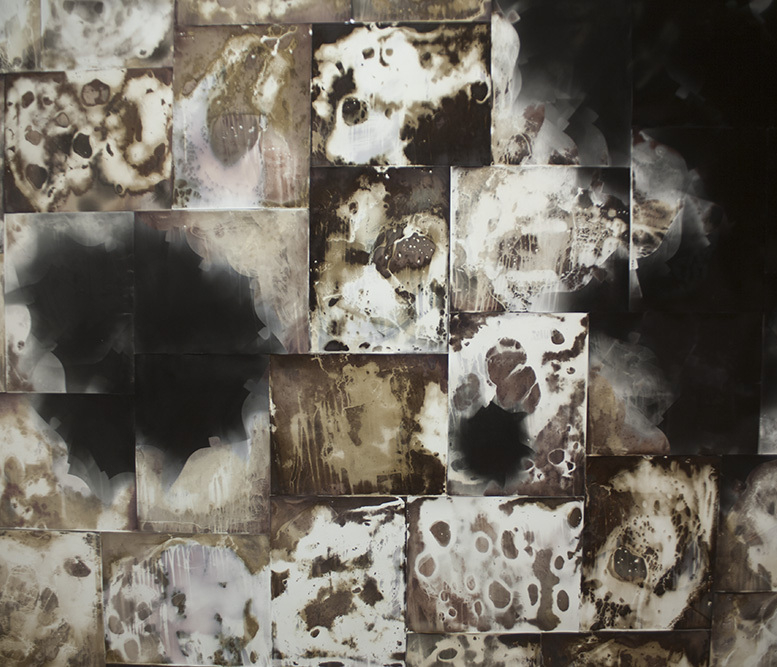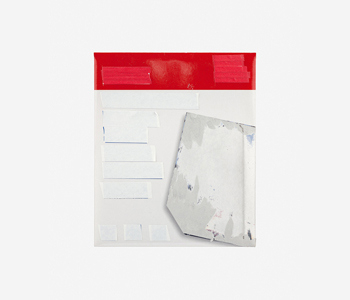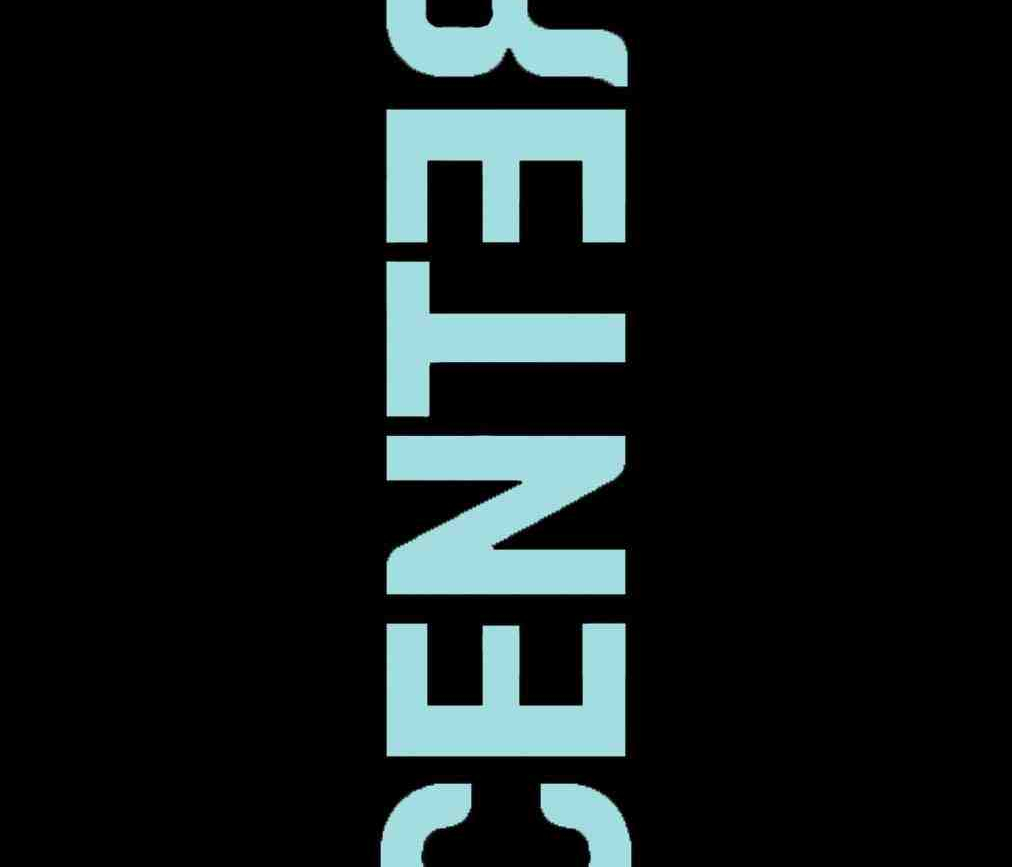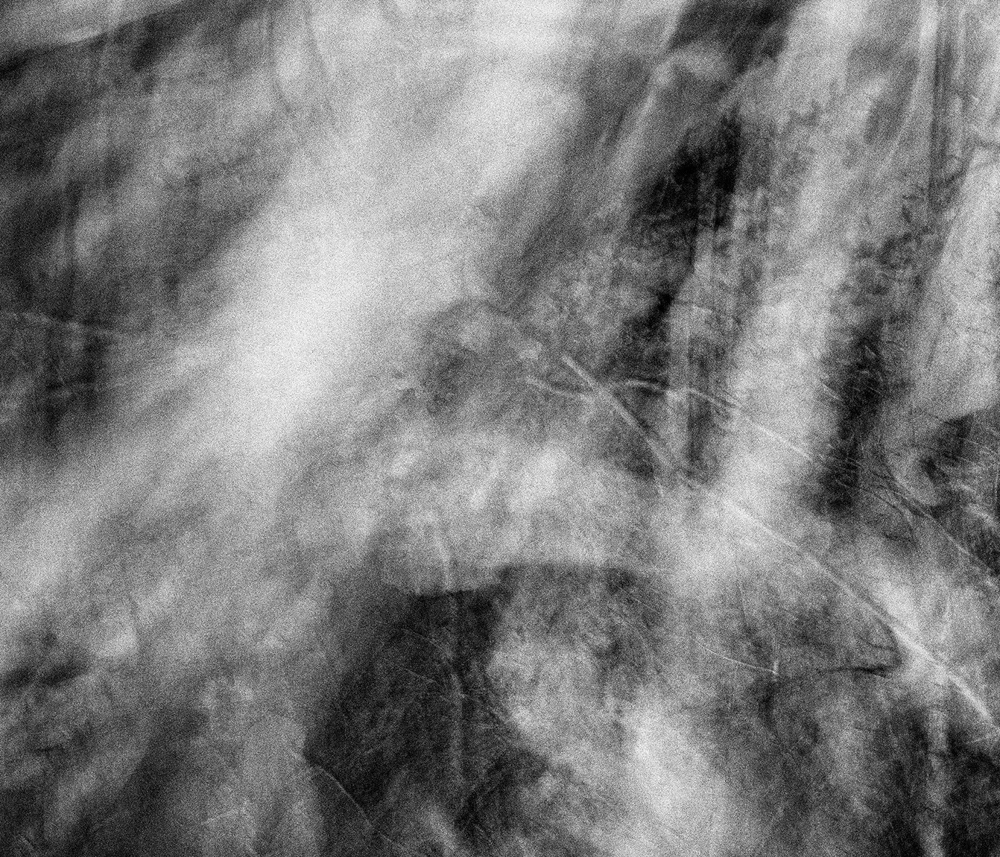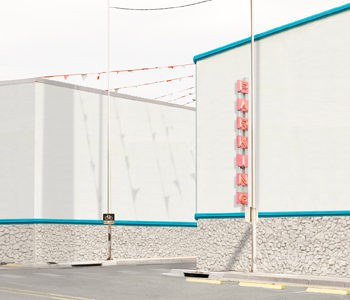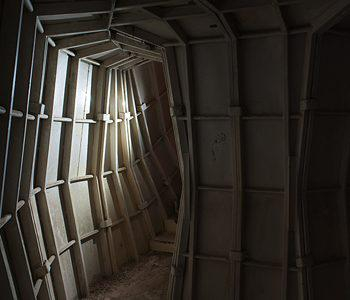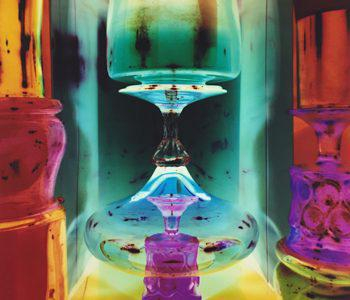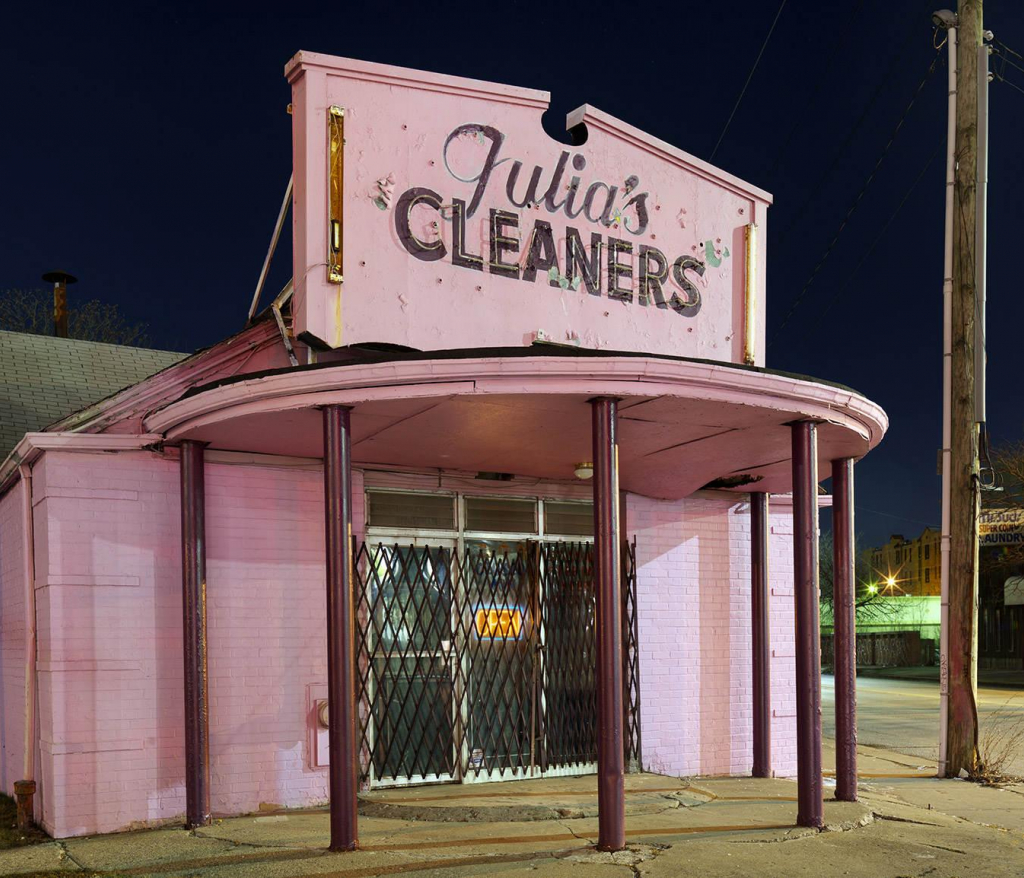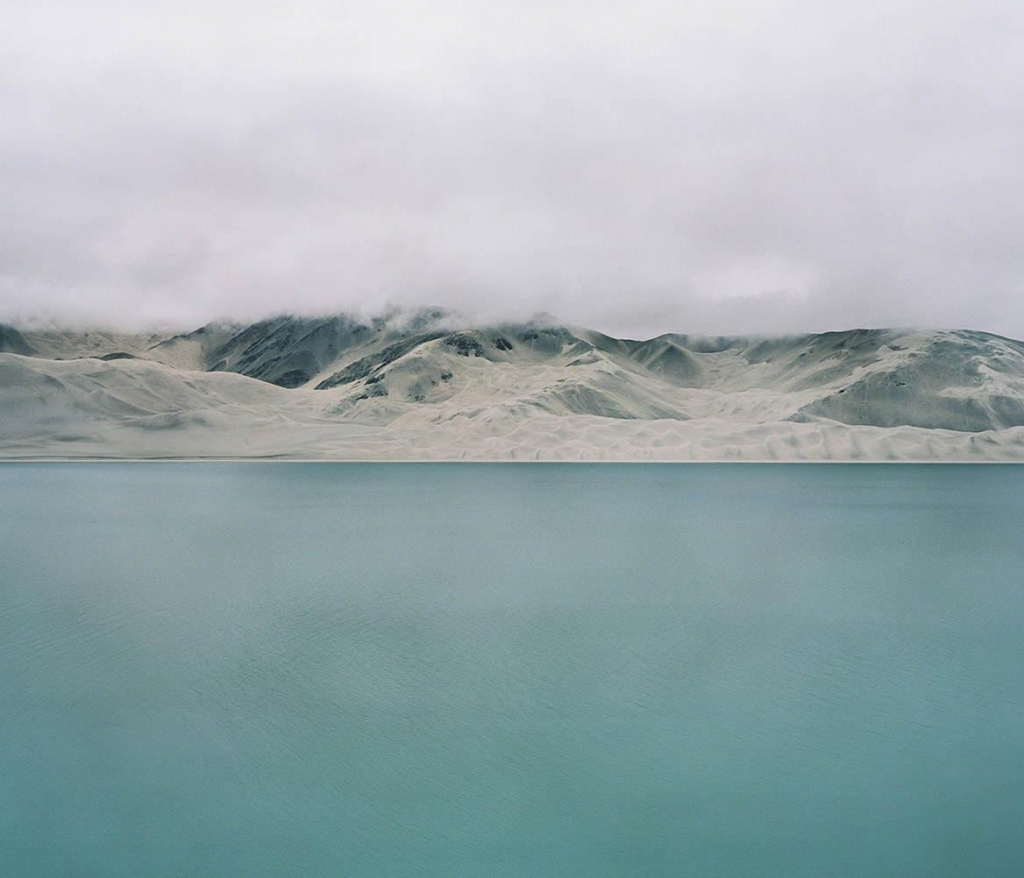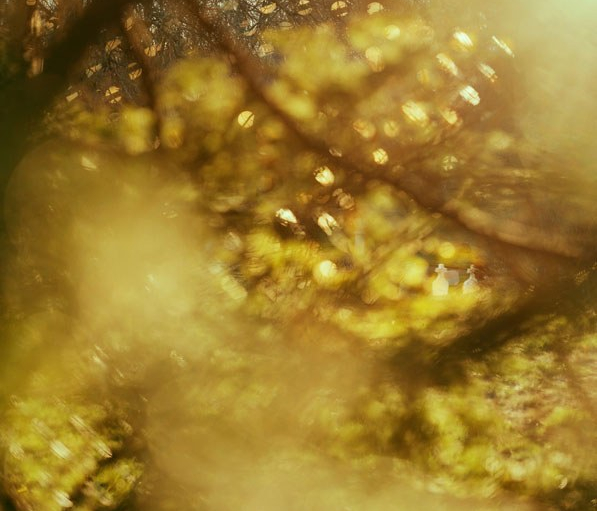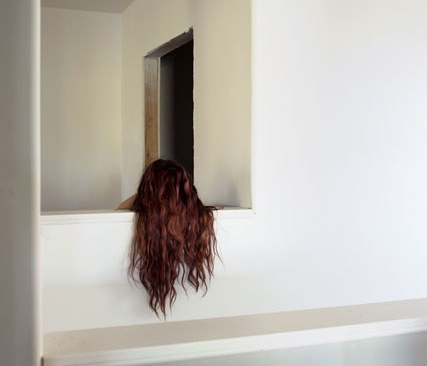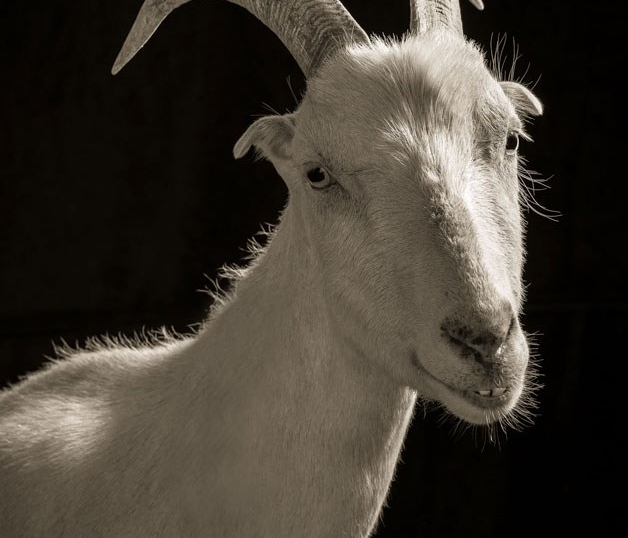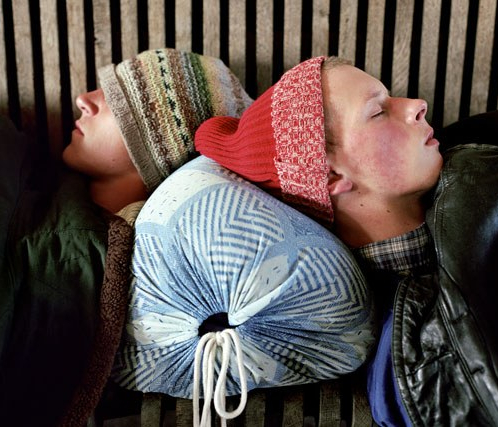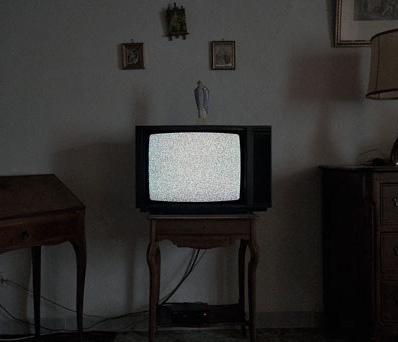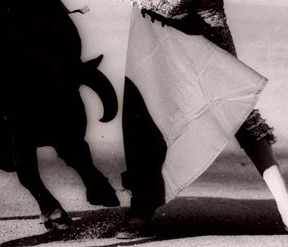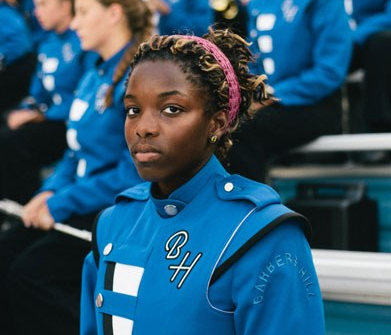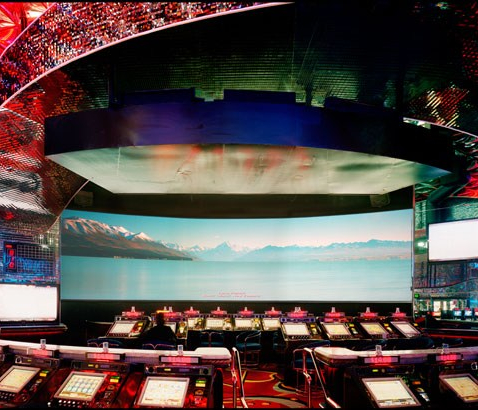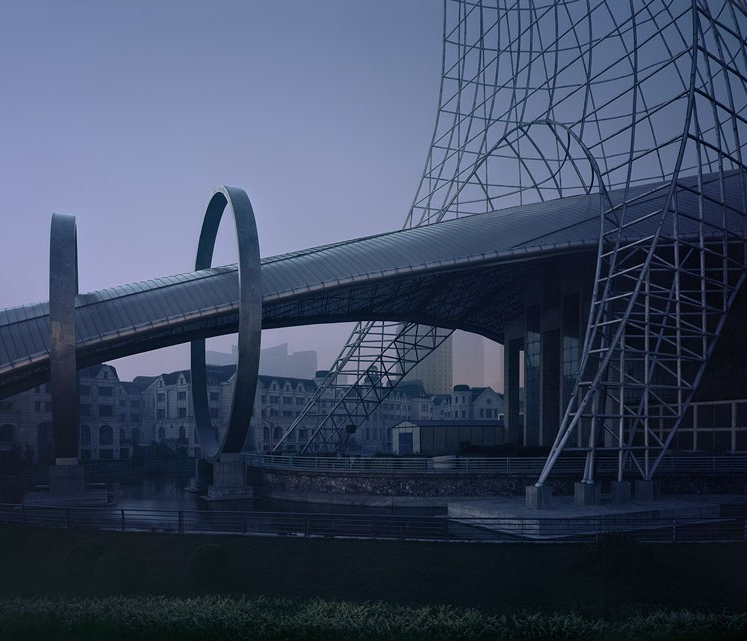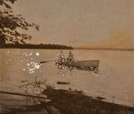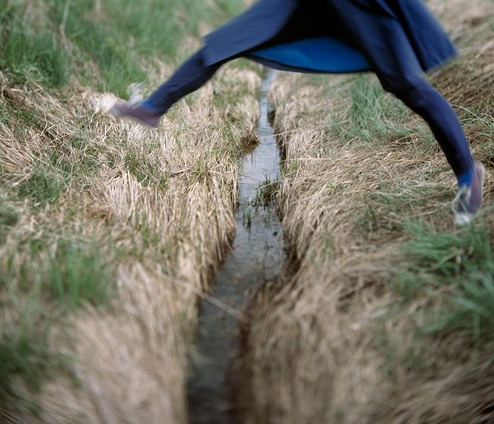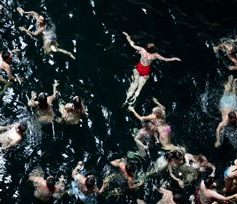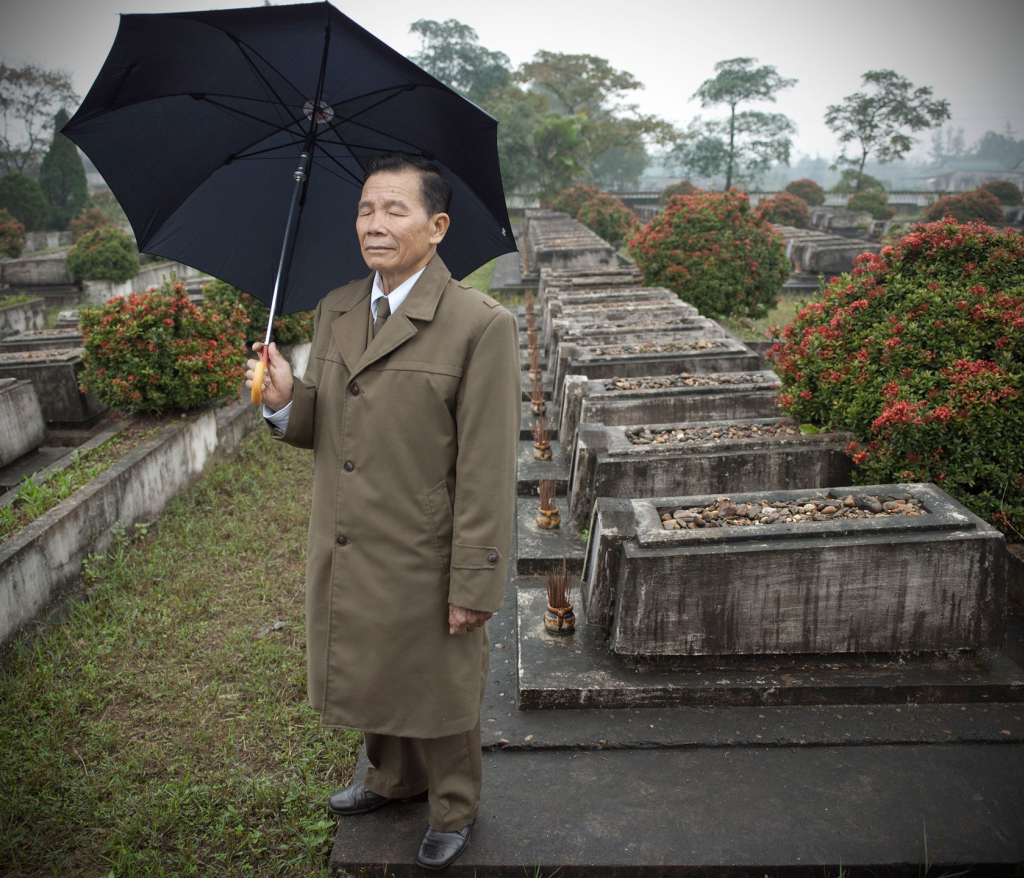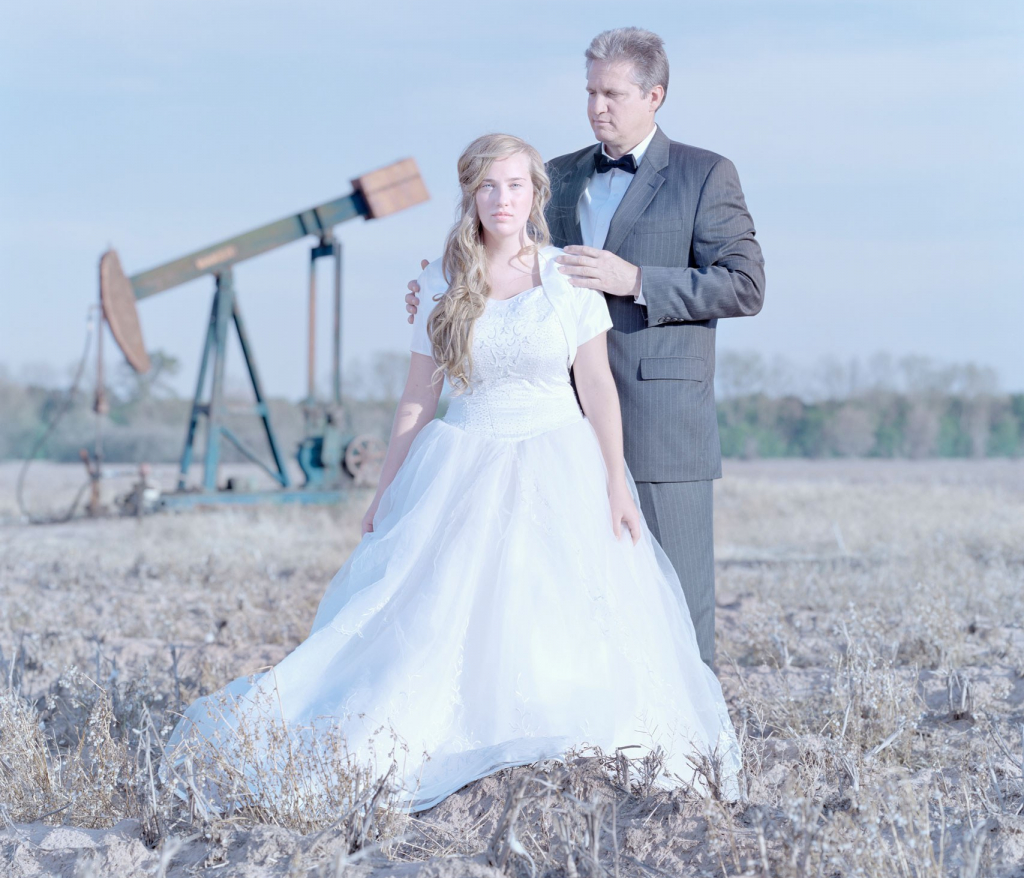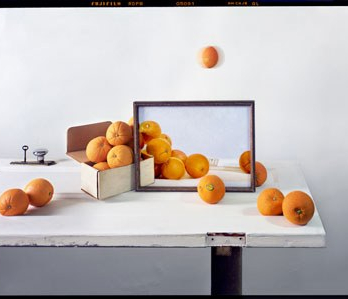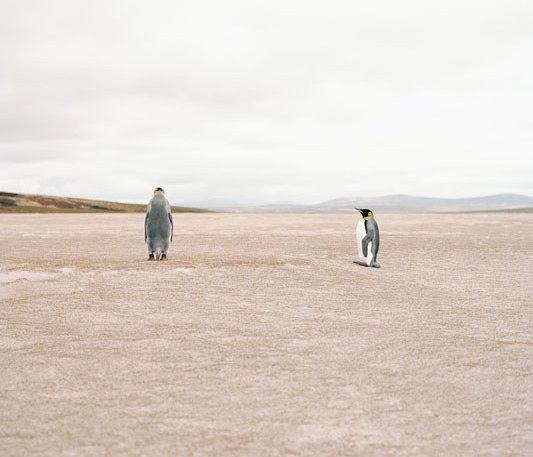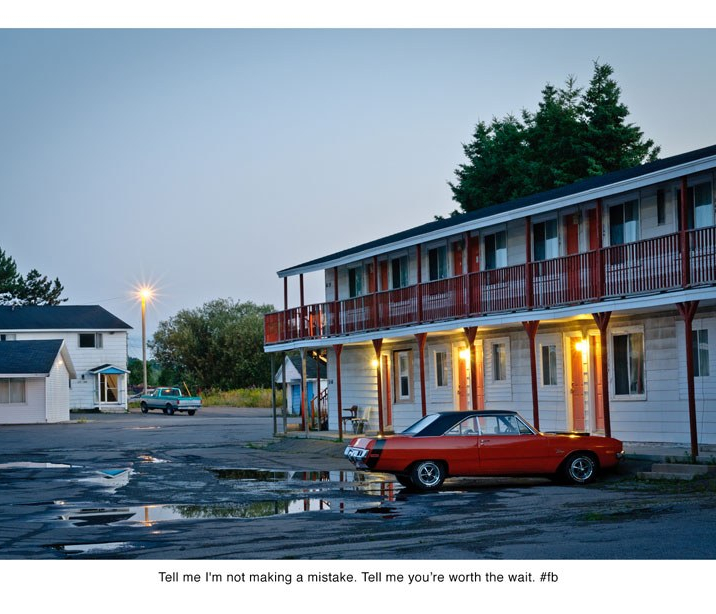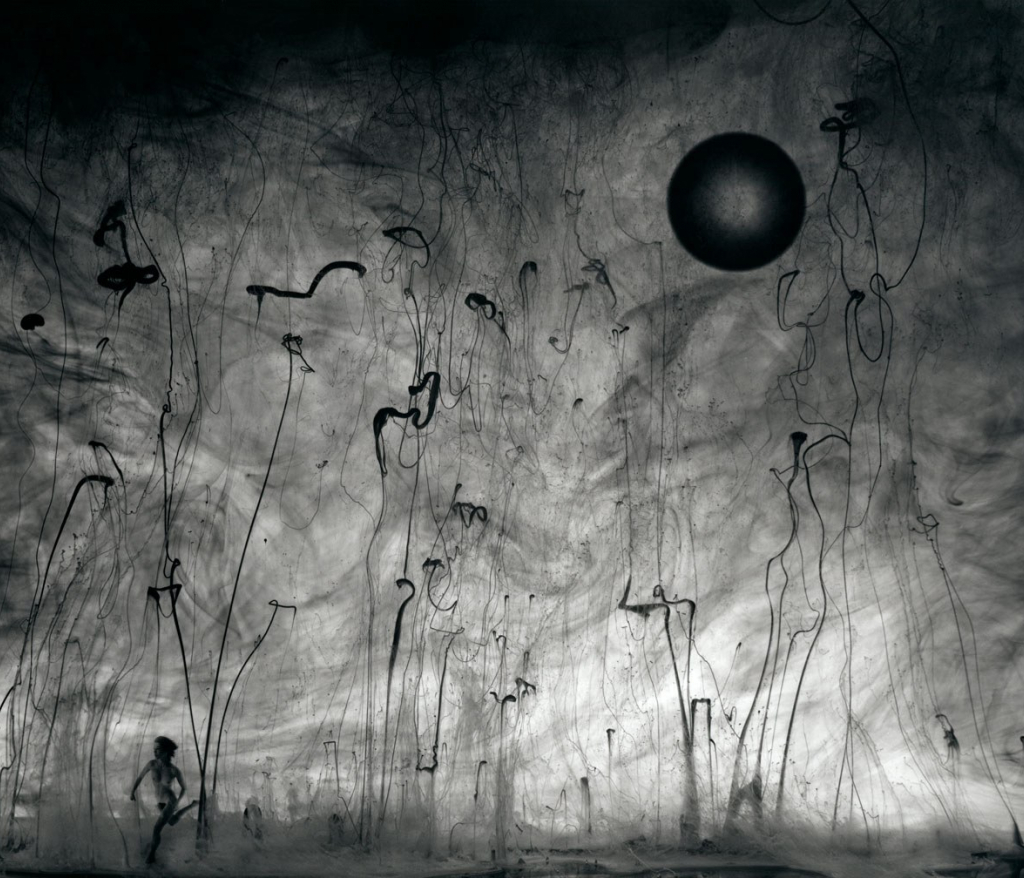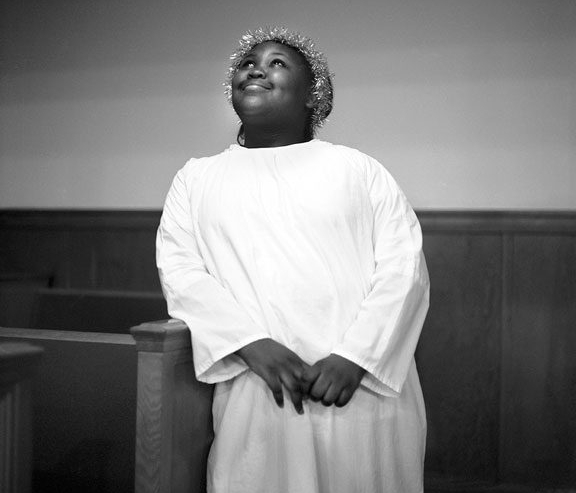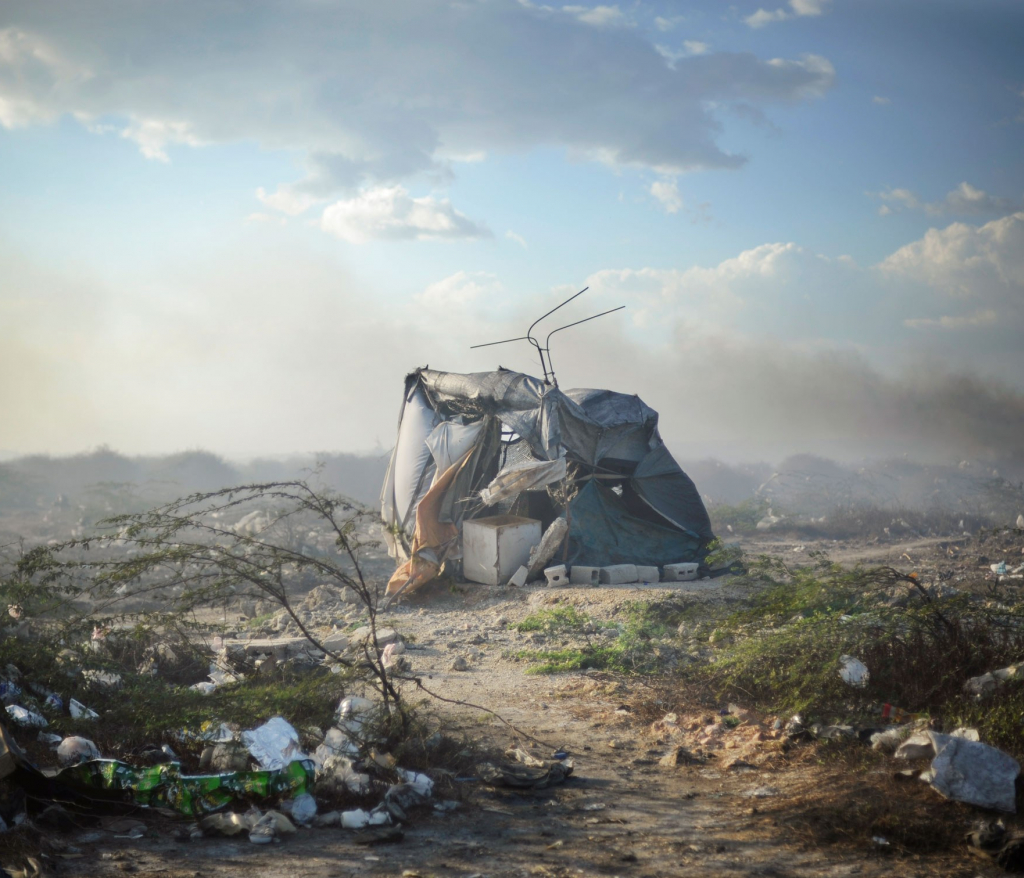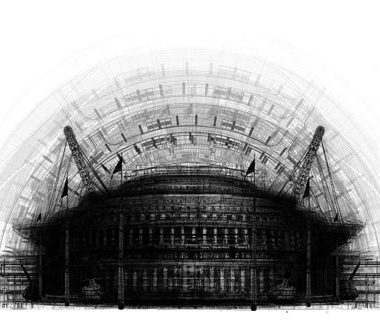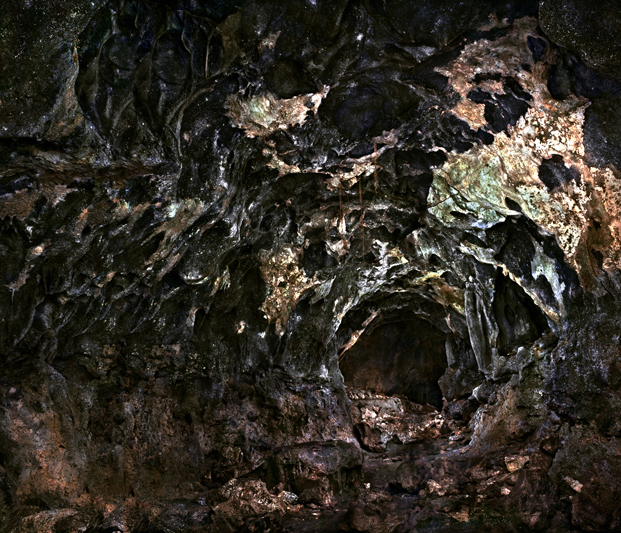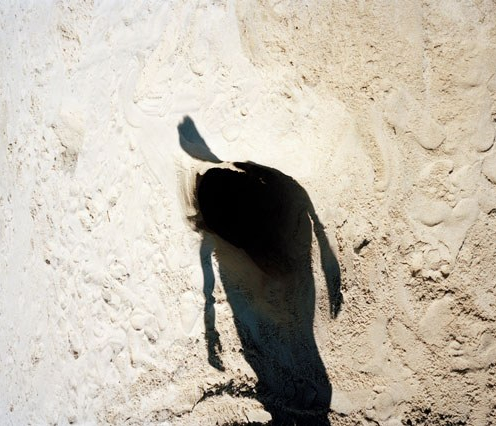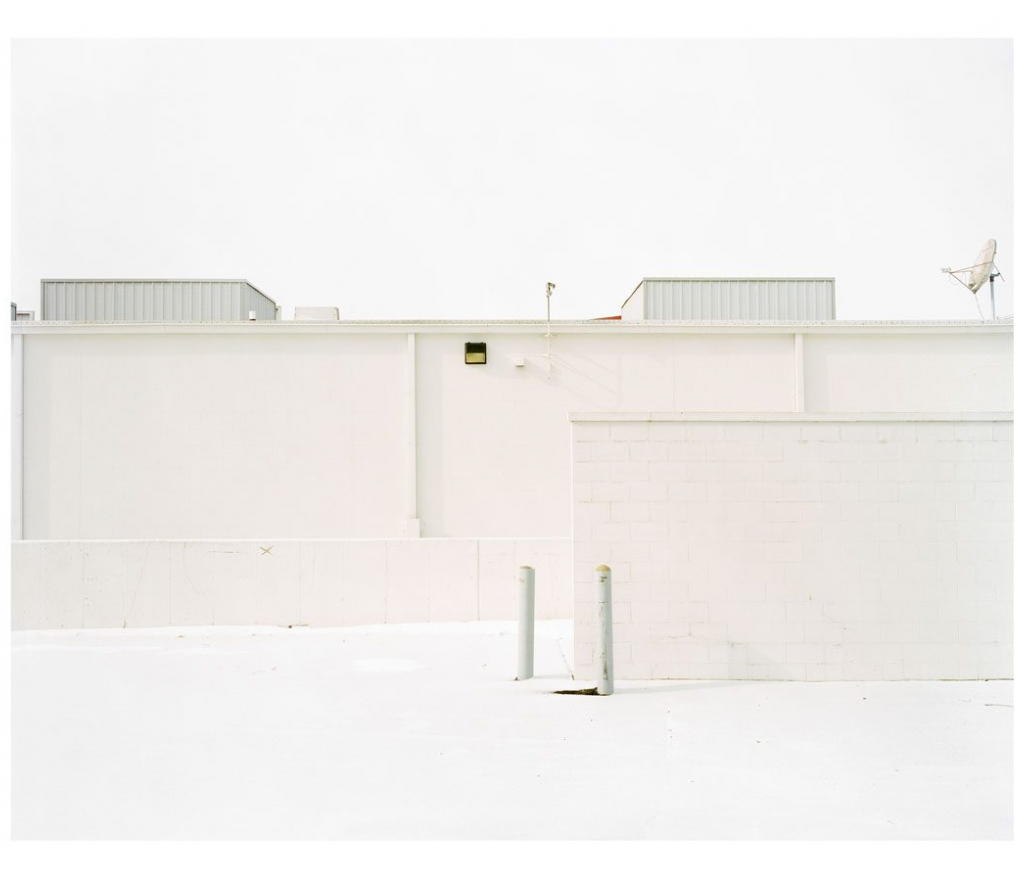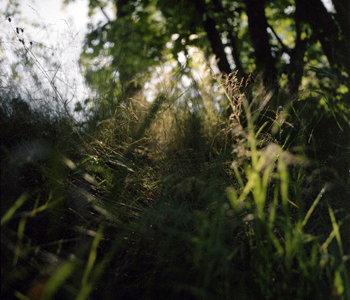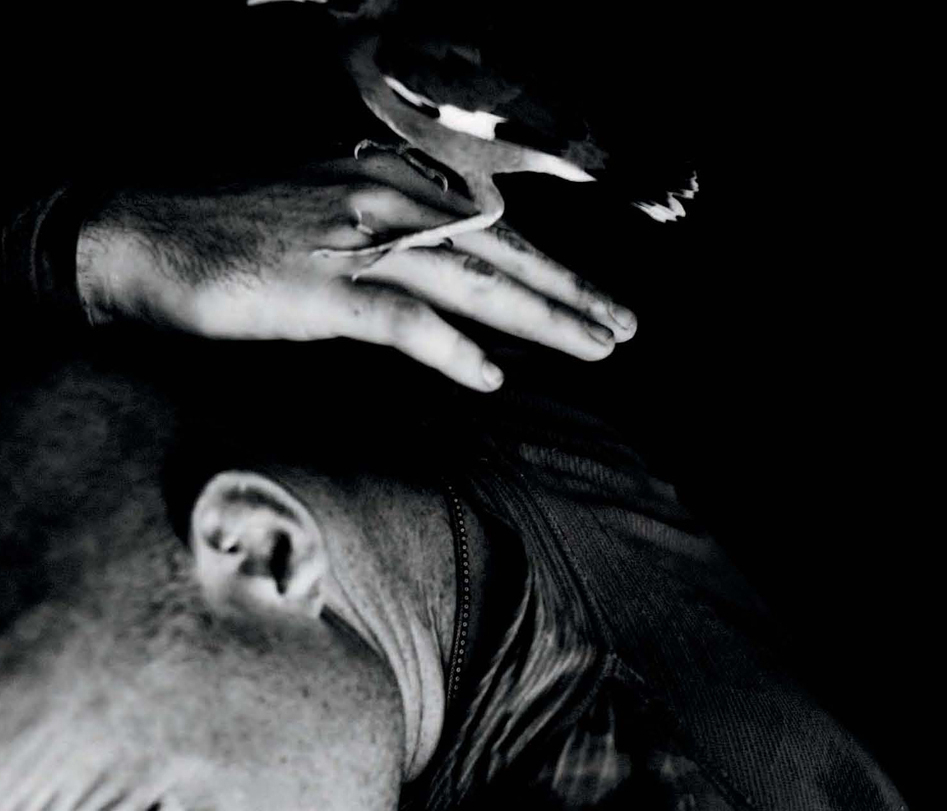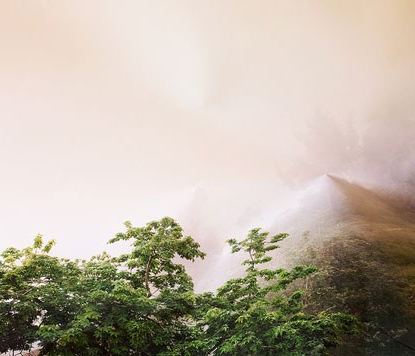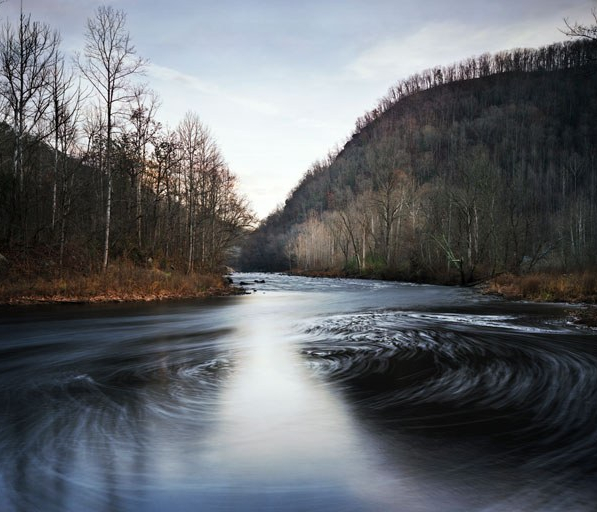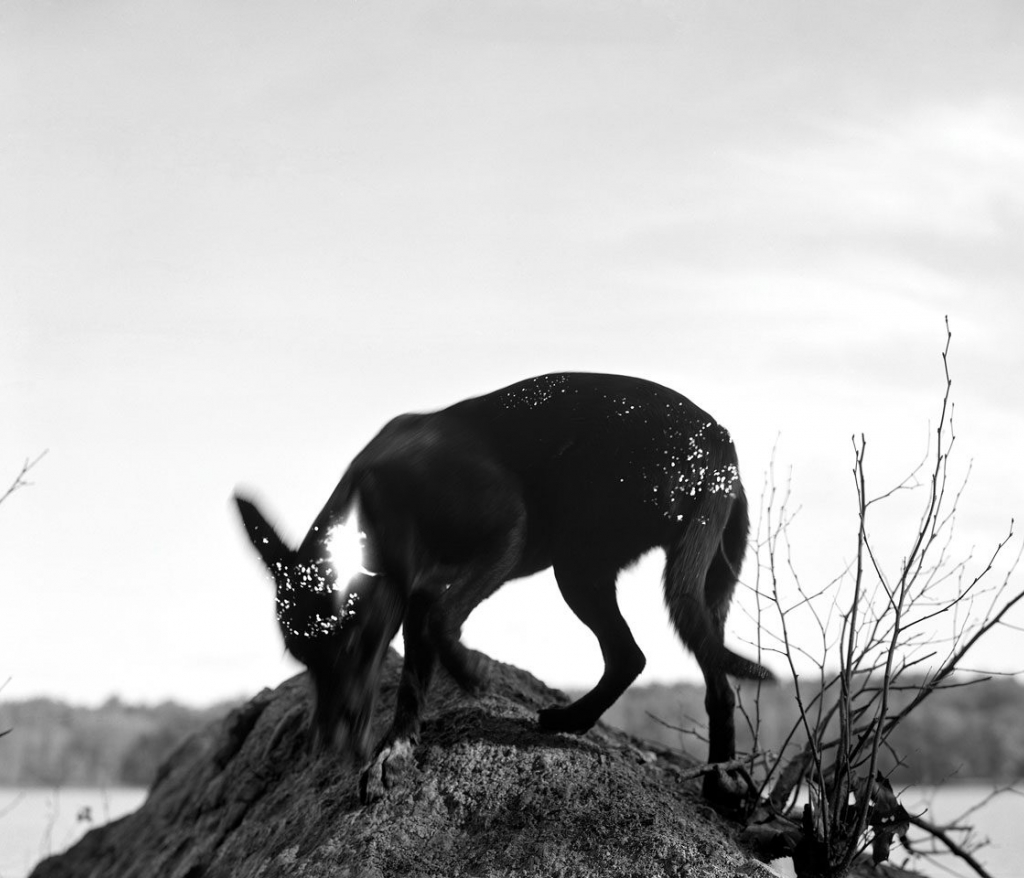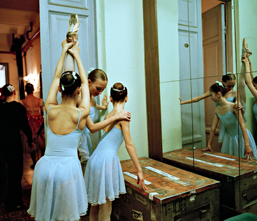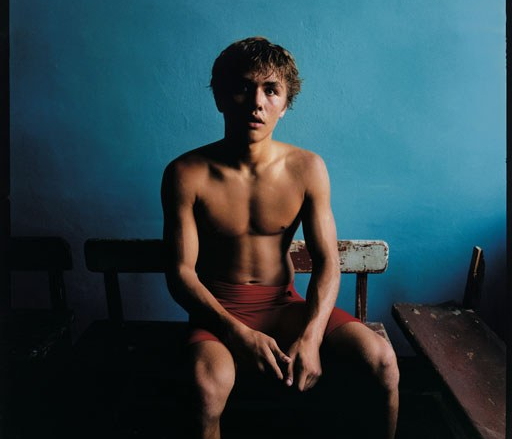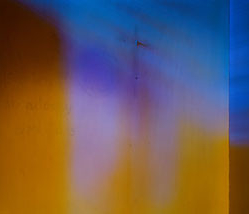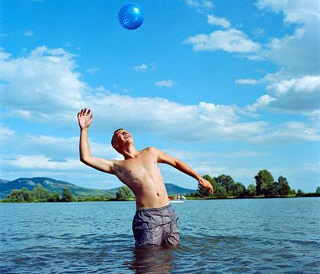Joe Johnson
The Playing Field
Joe Johnson
The Playing Field
A casino is not a typical public space; it’s a place built primarily for one very specific purpose. All the details are intentional, premeditated to make you think about gambling and little else. The purpose of Joe Johnson’s project, The Playing Field is not simply to critique casino culture. He invite us to be a bit dazzled as well, riding the escalator through a bewildering jeweled landscape of mirrors. Johnson astutely documents the strange and particular aesthetic details of Reno’s casinos as he probes themes of wealth, compulsion and the American dream. The Playing Field presents the casinos of Reno, gambling’s number two city. Unlike some of Vegas, the buildings in Reno have not necessarily been updated to reflect the current image of wealth. In their interiors, the glitz of past decades abounds.
And then there are the exteriors, with bright hot sun blinding the pavement. Johnson includes a subset of photographs from the town outside, dazing the viewer in another way, with the blinking feeling of exiting a dark room at noon. Inside, Reno’s casinos are a disorienting maze of loud color and light. The viewer loses a sense of whether it is day or night, and sometimes even what is up and down. There are mirrors on every surface, including the ceiling.
Because Johnson’s photographs are made in the early morning hours, the interior scenes contain only a rare, stray human. There seem to be even fewer people found outside in the city at noon, braving the overwhelming heat. Psychological portraits of individual gamblers are left to another documentarian. Instead, Johnson focuses the attention onto the background. This particular way of looking at the empty room is consistent with the larger canon of his work. Two of his recent series document vacant news broadcasting rooms and megachurches. Along with the casinos, these are all rooms of constructed realities where careful staging takes place.
Johnson’s approach is fairly neutral, and yet, he exposes unexpected details, clues to a larger narrative. In Dormant Gold Mine, he draws a subtle connection between the gold rush, embedded in Reno’s history, and the present state of the city’s major industry. This has long time been a land where people have been drawn to prospects of luck and sudden wealth.
I am most interested in the seams of the veneer, where the spectacle does not quite deliver upon its glossy promise.
Joe Johnson earned an MFA from the Massachusetts College Art and a BFA from the San Francisco Art Institute. His work has been reviewed and/or published in Art in America, The New York Times, The Boston Globe, Esquire Magazine Russia, and YVI Magazine in the Netherlands. Johnson has participated in exhibitions at the Cleveland Art Museum, The DeCordova Museum, MassMoCA, Bonni Benrubi Gallery in NY, Flatfile Gallery in Chicago, and Gallery Kayafas in Boston. Johnson’s photographs are included within the permanent collections of the Museum of Fine Arts, Boston, The Nelson-Adkins Museum of Art in Kansas City, the DeCordova Museum in Lincoln MA, and the Beach Art Museum. He is currently head of the art photography program at the University of Missouri-Columbia.
Joe Johnson
The Playing Field
A casino is not a typical public space; it’s a place built primarily for one very specific purpose. All the details are intentional, premeditated to make you think about gambling and little else. The purpose of Joe Johnson’s project, The Playing Field is not simply to critique casino culture. He invite us to be a bit dazzled as well, riding the escalator through a bewildering jeweled landscape of mirrors. Johnson astutely documents the strange and particular aesthetic details of Reno’s casinos as he probes themes of wealth, compulsion and the American dream. The Playing Field presents the casinos of Reno, gambling’s number two city. Unlike some of Vegas, the buildings in Reno have not necessarily been updated to reflect the current image of wealth. In their interiors, the glitz of past decades abounds.
And then there are the exteriors, with bright hot sun blinding the pavement. Johnson includes a subset of photographs from the town outside, dazing the viewer in another way, with the blinking feeling of exiting a dark room at noon. Inside, Reno’s casinos are a disorienting maze of loud color and light. The viewer loses a sense of whether it is day or night, and sometimes even what is up and down. There are mirrors on every surface, including the ceiling.
Because Johnson’s photographs are made in the early morning hours, the interior scenes contain only a rare, stray human. There seem to be even fewer people found outside in the city at noon, braving the overwhelming heat. Psychological portraits of individual gamblers are left to another documentarian. Instead, Johnson focuses the attention onto the background. This particular way of looking at the empty room is consistent with the larger canon of his work. Two of his recent series document vacant news broadcasting rooms and megachurches. Along with the casinos, these are all rooms of constructed realities where careful staging takes place.
Johnson’s approach is fairly neutral, and yet, he exposes unexpected details, clues to a larger narrative. In Dormant Gold Mine, he draws a subtle connection between the gold rush, embedded in Reno’s history, and the present state of the city’s major industry. This has long time been a land where people have been drawn to prospects of luck and sudden wealth.
I am most interested in the seams of the veneer, where the spectacle does not quite deliver upon its glossy promise.
Joe Johnson earned an MFA from the Massachusetts College Art and a BFA from the San Francisco Art Institute. His work has been reviewed and/or published in Art in America, The New York Times, The Boston Globe, Esquire Magazine Russia, and YVI Magazine in the Netherlands. Johnson has participated in exhibitions at the Cleveland Art Museum, The DeCordova Museum, MassMoCA, Bonni Benrubi Gallery in NY, Flatfile Gallery in Chicago, and Gallery Kayafas in Boston. Johnson’s photographs are included within the permanent collections of the Museum of Fine Arts, Boston, The Nelson-Adkins Museum of Art in Kansas City, the DeCordova Museum in Lincoln MA, and the Beach Art Museum. He is currently head of the art photography program at the University of Missouri-Columbia.
